Creating a beautiful backyard shouldn't mean spending every weekend maintaining it. Low maintenance backyard landscaping has gained popularity as homeowners seek stunning outdoor spaces that require minimal effort and resources to maintain. These approaches can reduce maintenance time and costs while creating sustainable, water-wise landscapes. Whether you're dealing with poor soil, limited water access, or simply want more time to enjoy your space rather than work in it, strategic design choices can transform your backyard into a beautiful retreat that practically takes care of itself.
1. Native Plant Low Maintenance Backyard Landscaping
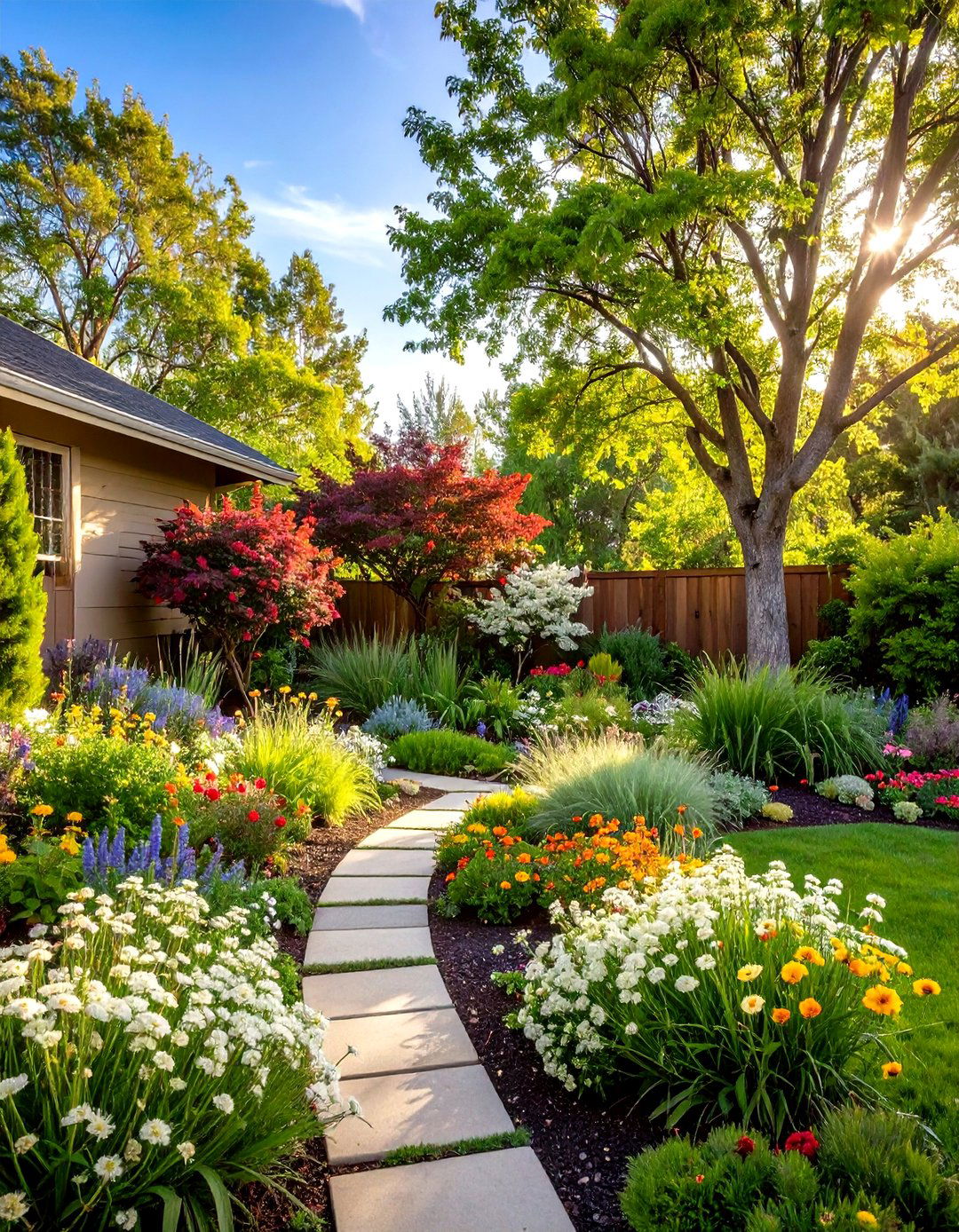
Native plants are adapted to the specific climate and conditions of their native region, having evolved to be water-efficient and thrive in harsh conditions. Creating a complete native plant landscape involves selecting indigenous trees, shrubs, perennials, and grasses that naturally belong in your area. This comprehensive approach eliminates the need for frequent watering, fertilizing, or pest control since these plants have developed natural resistance to local diseases and insects. Native plants also support local wildlife by serving as nesting sites, food sources, and attracting pollinators like bees, butterflies, and hummingbirds. Design your space with layered plantings that include canopy trees, understory shrubs, and ground-level wildflowers to create a naturalistic ecosystem that requires minimal intervention while providing year-round interest and habitat value.
2. Xeriscaped Low Maintenance Backyard Landscaping

Xeriscaping is a landscaping design that uses drought-tolerant plants and design elements to create an eco-friendly landscape that can reduce water and maintenance costs by up to 60%. This complete design philosophy incorporates seven core principles: thoughtful planning, soil improvement, appropriate plant selection, efficient irrigation, limited turf areas, mulching, and ongoing maintenance. A well-designed xeriscape integrates rock features, native drought-resistant plants like sagebrush and yucca, and hardscaping elements such as pathways and patios. The landscape mimics natural desert environments with strategically placed boulders, gravel pathways, and grouped plantings that create microclimates. Modern xeriscaping can include fire pits, outdoor seating areas, and artistic elements while maintaining the water-wise principles that make this approach both beautiful and sustainable.
3. Artificial Turf Low Maintenance Backyard Landscaping
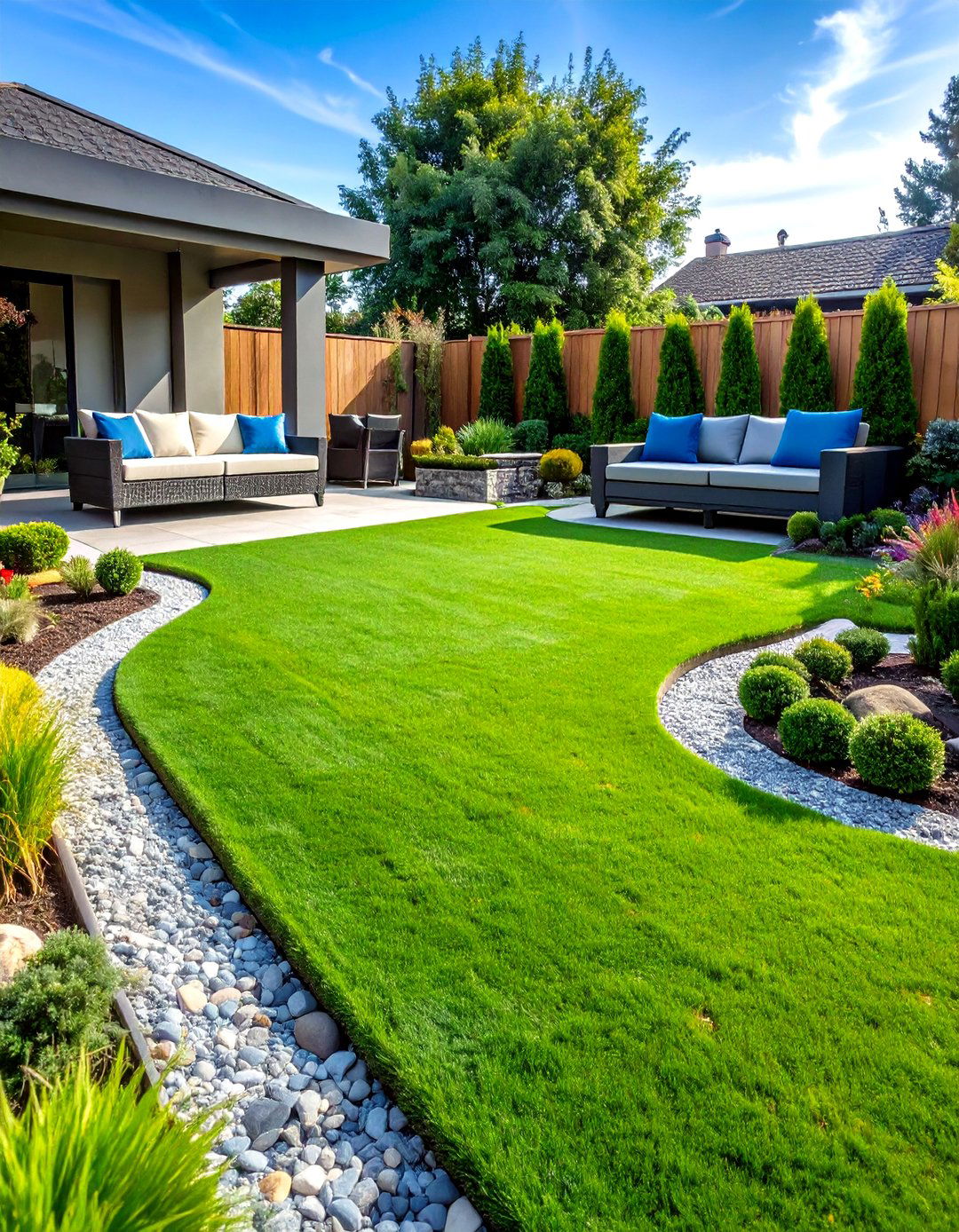
Artificial grass is a popular alternative that closely resembles natural grass but involves far less maintenance than real grass. A complete artificial turf landscape design incorporates synthetic grass areas with complementary hardscaping elements like decorative borders, planted beds, and seating areas. You can create patterns by alternating squares of hardscape materials with artificial turf, or design flowing curves that blend with natural stone pathways. The installation process involves proper ground preparation, drainage systems, and professional-grade turf that can withstand heavy foot traffic. Modern artificial turf provides a consistently green, comfortable surface that requires minimal upkeep compared to natural grass and is highly durable for heavy foot traffic. This approach works particularly well when combined with container gardens, water features, or outdoor entertainment areas.
4. Hardscaped Low Maintenance Backyard Landscaping
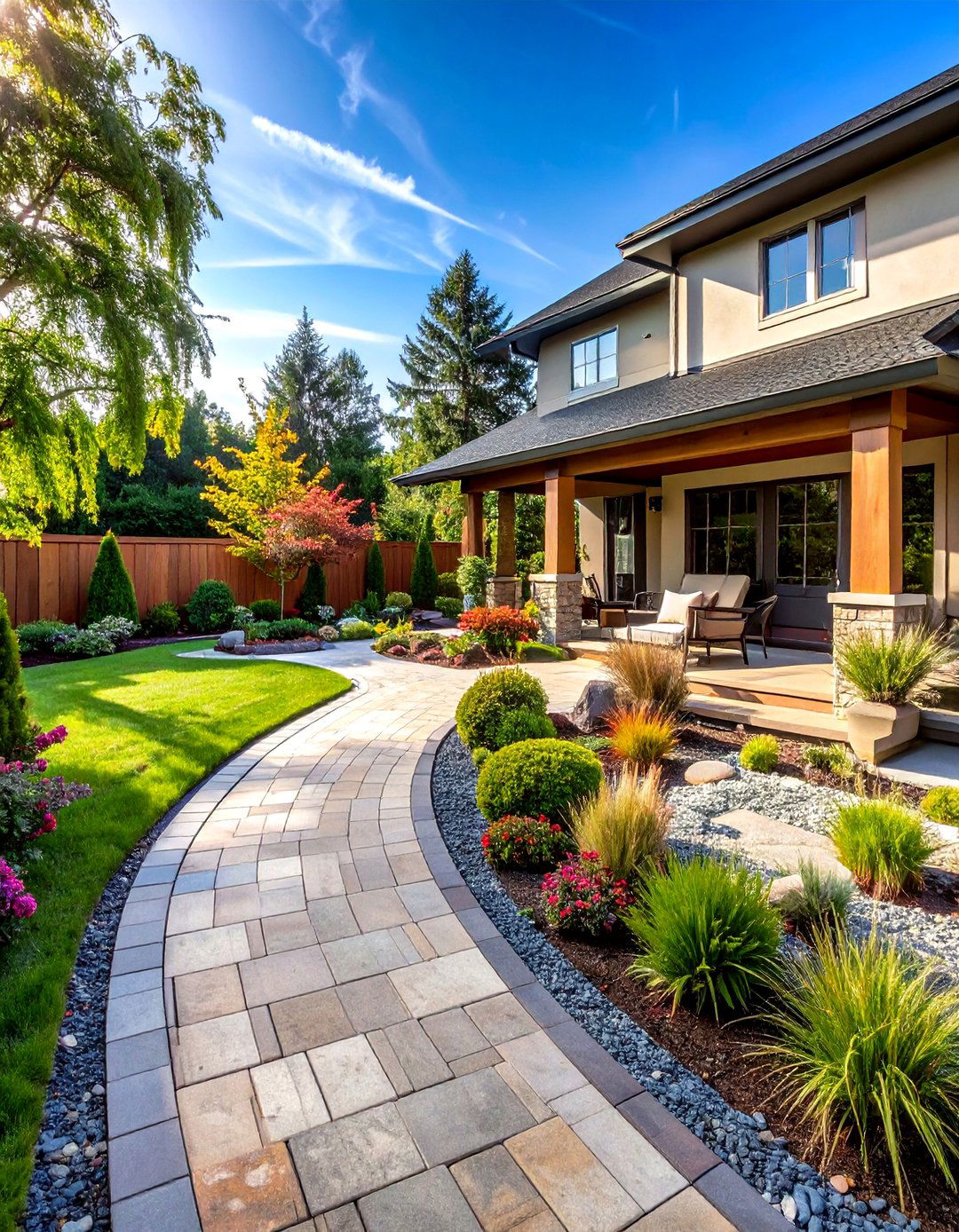
Hardscaping involves using pavers, brick, or decorative stone to create durable surfaces that never need weeding or watering. A comprehensive hardscape design transforms your backyard into an outdoor living space using permanent materials like natural stone patios, brick walkways, gravel gardens, and retaining walls. Natural stone pavers offer more creative design options than poured concrete and can be easily replaced if damaged. The design should include different levels and zones for dining, relaxation, and entertainment, connected by meandering pathways that create visual interest. Incorporate permeable materials such as gravel or porous pavers to allow water penetration while maintaining functionality. This approach essentially eliminates traditional maintenance tasks while creating sophisticated outdoor rooms that can accommodate furniture, fire features, and architectural plants in strategic locations.
5. Succulent Garden Low Maintenance Backyard Landscaping
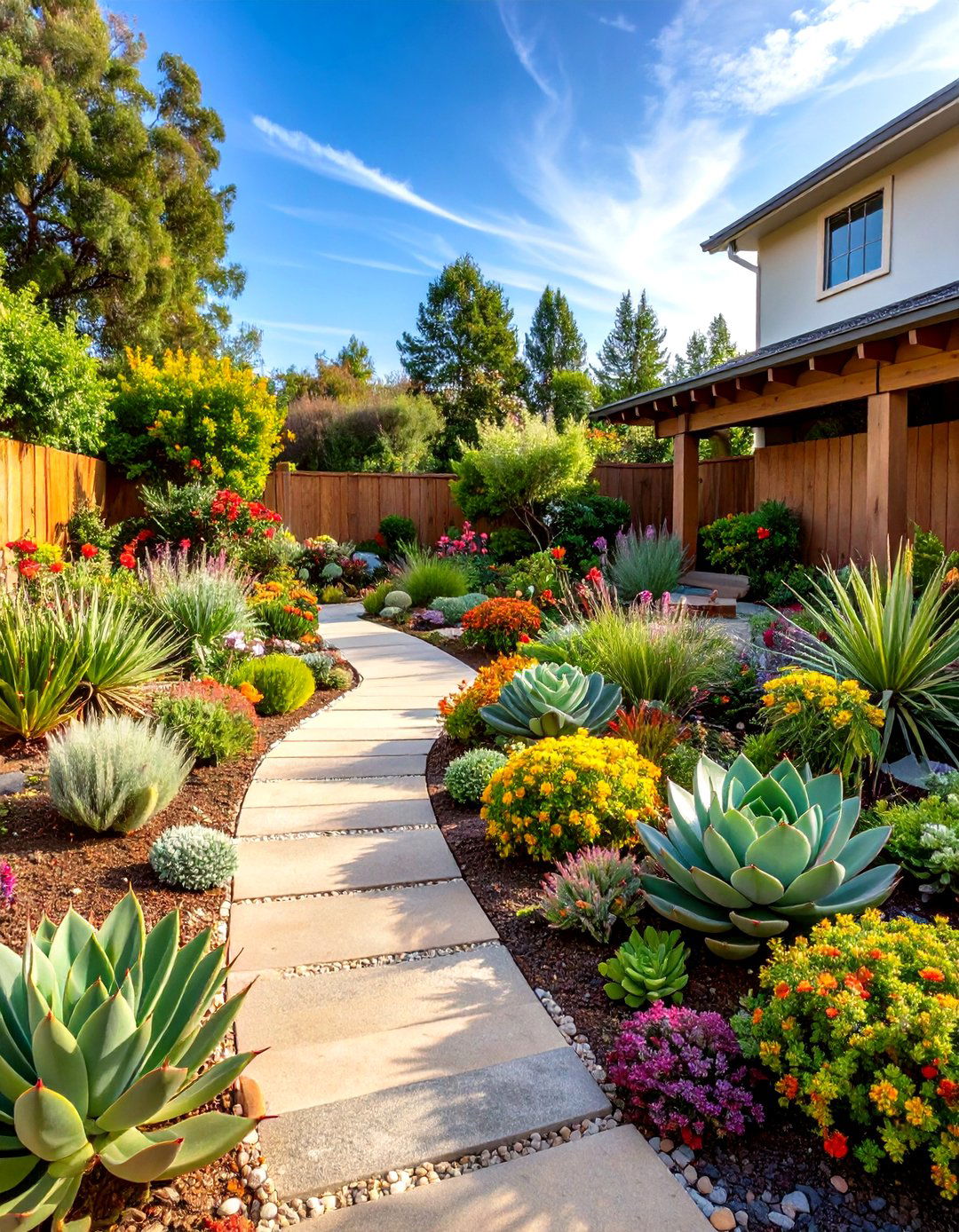
Succulents are water-storing plants that offer diverse textures and colors while requiring minimal care, making them perfect for drought-tolerant landscapes. A complete succulent garden design incorporates various species with different growth habits, colors, and textures arranged in naturalistic groupings. Create visual interest by selecting succulents with varying heights, colors, and textures, ensuring proper spacing for mature growth. The landscape should include well-draining soil amendments, decorative gravel mulch, and complementary hardscape elements like stone pathways or sculptural rocks. Integrate different types including rosette-forming sedums, architectural agaves, and cascading varieties to create a living sculpture that thrives in full sun. This design works especially well in Mediterranean climates and can include container groupings, raised beds, and rock garden features.
6. Clover Lawn Low Maintenance Backyard Landscaping
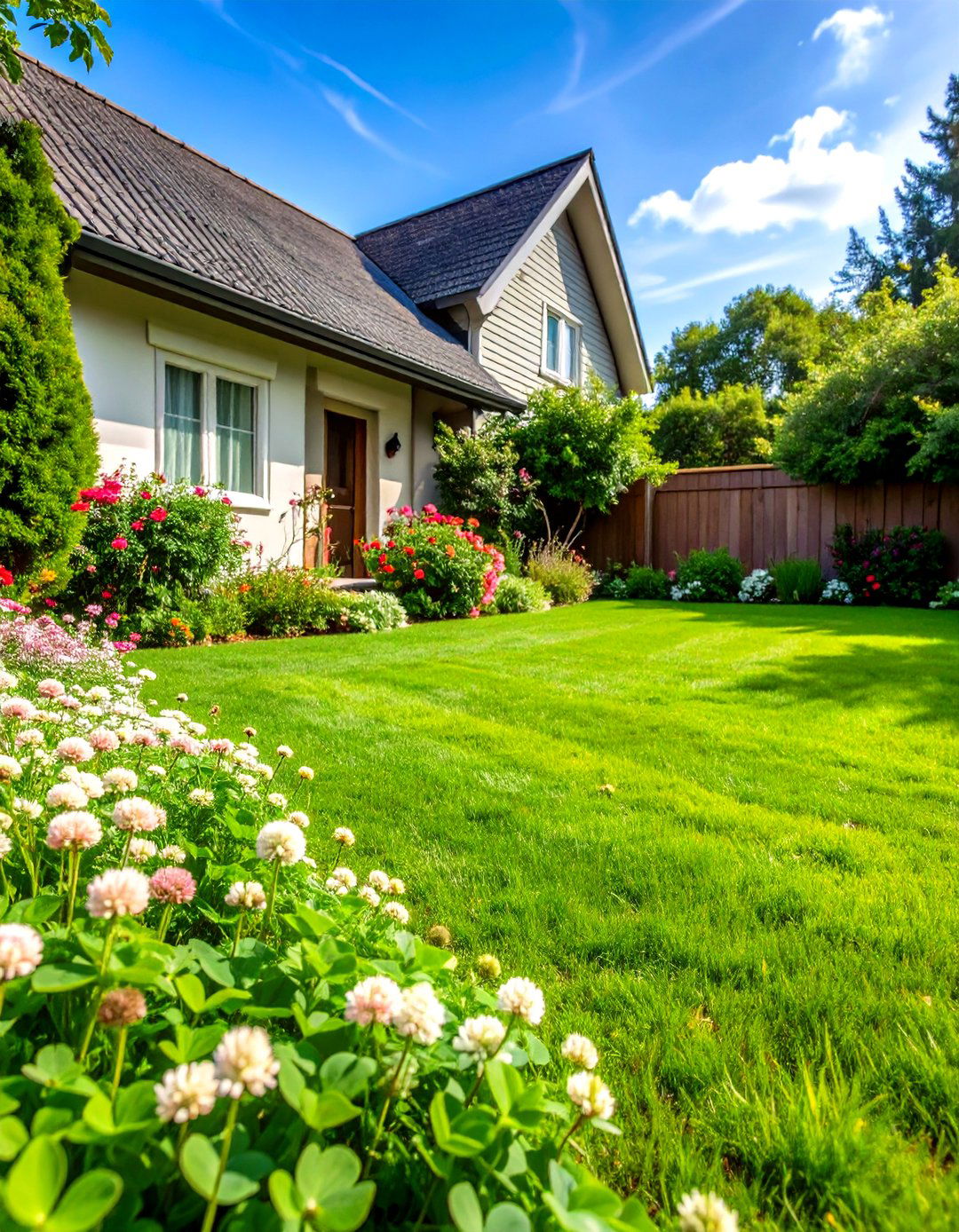
White clover creates a dense, drought-tolerant ground cover that requires minimal watering, stays green throughout summer, and needs mowing only a few times per year. A complete clover landscape replaces traditional turf with this nitrogen-fixing legume that naturally fertilizes itself and surrounding plants. Clover is resistant to discoloration from pet urine, feels soft underfoot, and produces sweet-scented flowers that attract beneficial pollinators. The design can incorporate pure clover areas for low-traffic zones and clover-grass mixtures for high-use spaces. Different varieties like microclover blend well with existing grass, while Dutch white clover works excellently as a complete lawn replacement. This approach significantly reduces water usage, eliminates the need for fertilizers, and creates a living carpet that supports local bee populations while requiring only occasional maintenance.
7. Rock Garden Low Maintenance Backyard Landscaping

Rock gardens combine various rocks, boulders, and drought-tolerant plants to create natural-looking landscapes that require minimal maintenance and add visual interest. This complete design philosophy uses stone as the primary structural element, incorporating different sizes from small pebbles to large boulders to create height, texture, and focal points. Plant selection includes alpine plants, ornamental grasses, and drought-resistant perennials that naturally thrive in rocky environments. The landscape design should include proper drainage, strategic plant placement in rock crevices, and pathways that wind through the garden. Rocks prevent evaporation by trapping moisture in the ground while providing maintenance-free hardscape elements. This approach works particularly well on slopes, in challenging soil conditions, or as a replacement for traditional lawn areas that are difficult to maintain.
8. Container Garden Low Maintenance Backyard Landscaping

Container gardening provides a versatile way to grow plants that's ideal for anyone living in small spaces or wanting mobile garden elements. A comprehensive container landscape uses various sized planters, pots, and raised beds to create distinct garden zones without permanent soil commitment. Mix and match container sizes, colors, and styles for visual interest while selecting drought-tolerant plants like succulents, herbs, and ornamental grasses. The design should include groupings at different heights, seasonal rotation capabilities, and efficient watering systems like drip irrigation. Materials can include durable options like composite, ceramic, or stone containers that withstand weather while complementing your overall design aesthetic. This approach allows for complete design flexibility, easy seasonal changes, and the ability to move elements as needed while maintaining a cohesive landscape appearance.
9. Ornamental Grass Low Maintenance Backyard Landscaping
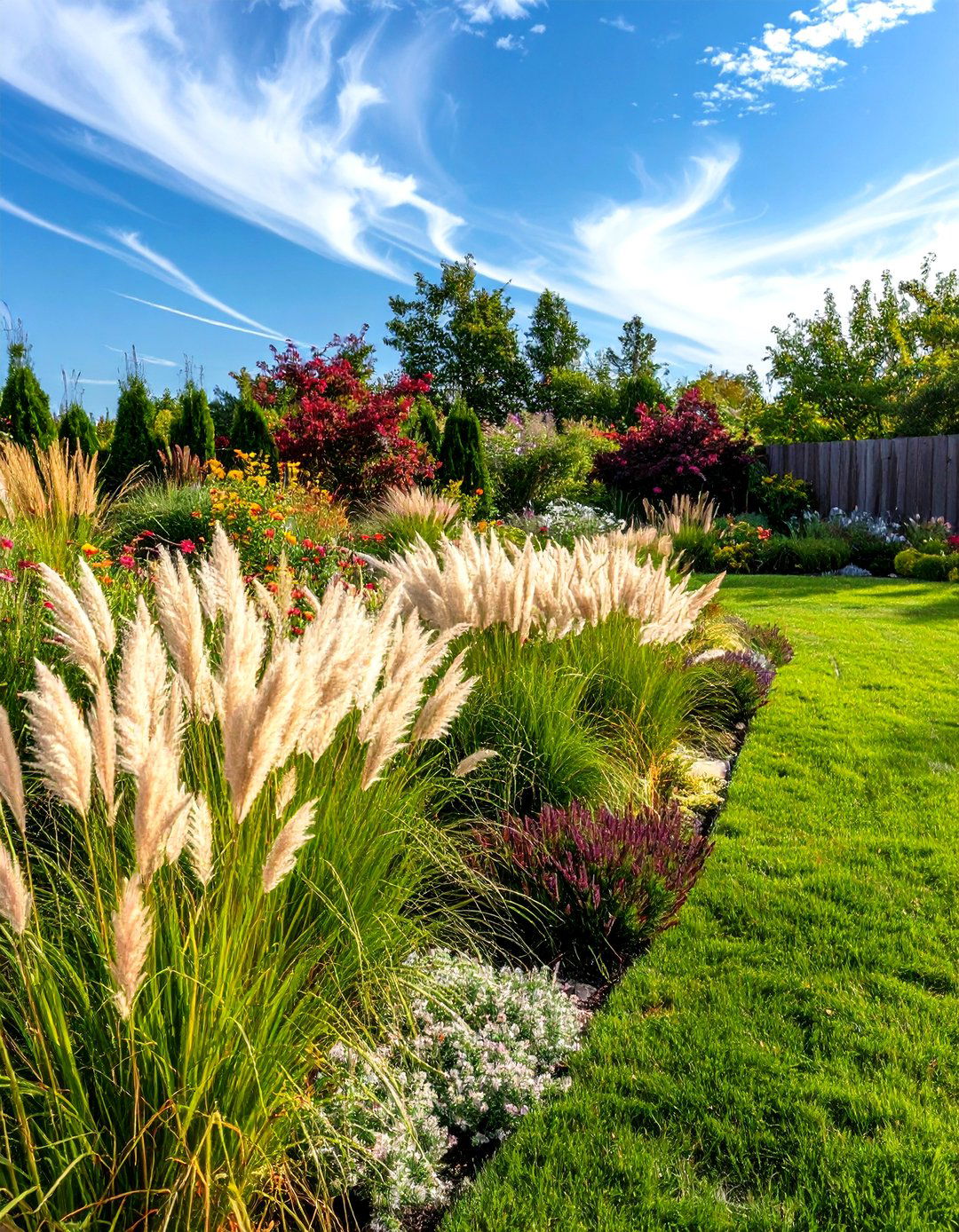
Ornamental grasses are drought-tolerant plants that add texture, movement, and seasonal interest while requiring minimal supplemental water once established. A complete grass landscape incorporates various species with different heights, textures, and colors to create a naturalistic meadow-like environment. Options include feather reed grass, fountain grass, and little bluestem, which provide distinctive styles and can handle various growing conditions. The design should feature mass plantings for impact, strategic spacing for mature growth, and integration with complementary perennials or shrubs. Common grass species like little bluestem and Indian grass work well in prairie-style designs, while fountain grass provides graceful movement in more formal settings. This approach creates a dynamic landscape that changes with seasons, provides wildlife habitat, and requires only annual cutting for maintenance.
10. Mulched Garden Low Maintenance Backyard Landscaping
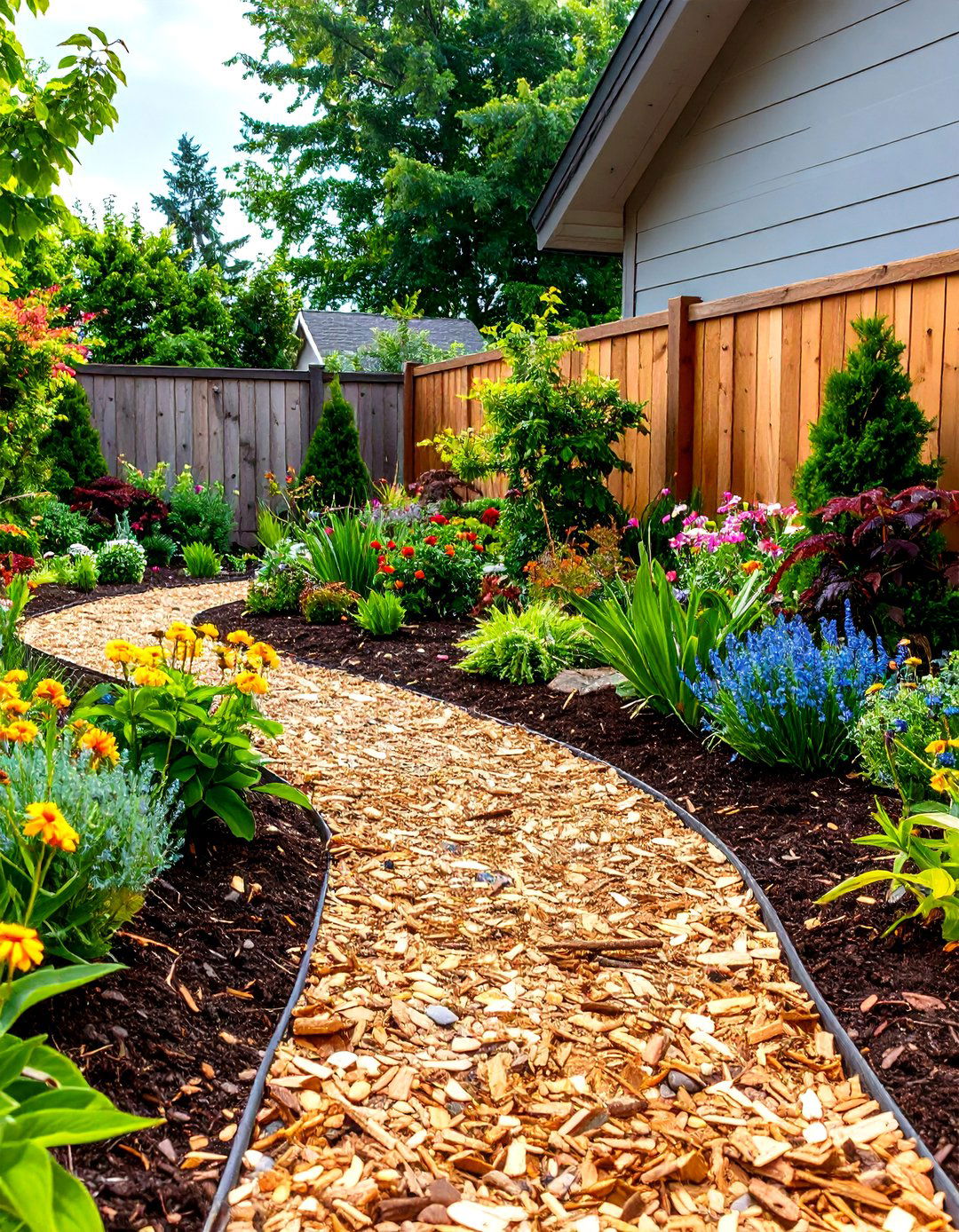
Mulch serves multiple purposes including moisture conservation, weed suppression, and creating a polished landscape appearance while improving soil health. A comprehensive mulched landscape design uses organic or inorganic mulch as the primary ground cover, punctuated by carefully selected low-maintenance plants. Options include wood chips, bark, gravel, crushed stone, or living mulches like ground covers that spread to suppress weeds. The design should incorporate different mulch types to define zones, create pathways, and provide textural contrast. Paths made of mulch between garden beds reduce lawn surface area while creating natural transitions between planted areas. This approach dramatically reduces weeding time, conserves water, and can be designed with artistic flair using different colors and textures of mulch materials to create patterns and visual interest.
11. Desert Theme Low Maintenance Backyard Landscaping
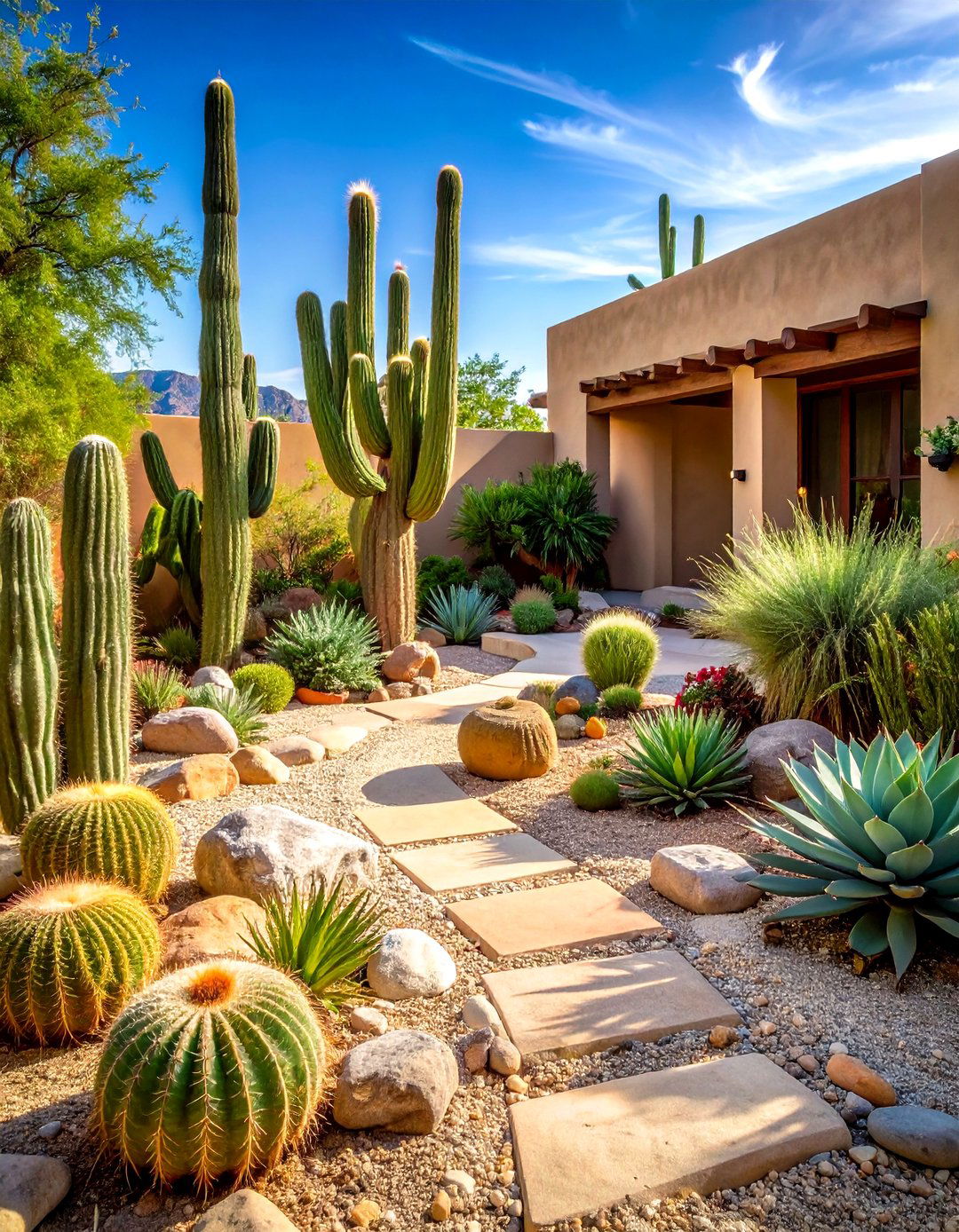
Desert landscaping uses succulents, cacti, rocks, and driftwood to create beautiful Southwest-inspired environments that are relatively easy to maintain. This complete design theme incorporates sandy soil, strategically placed boulders, and drought-adapted plants to simulate natural desert ecosystems. Design elements include dry creek beds using rocks and gravel, seating areas for relaxation, and vertical elements like architectural cacti or sculptural agaves. The landscape should feature proper drainage, heat-resistant materials, and plants that thrive in full sun conditions. Create a serene desert oasis with sand areas, boulder groupings, and cascading or upright cacti varieties. This approach works well in arid climates and can include artistic elements like southwestern pottery, metal sculptures, or fire features that complement the natural desert aesthetic.
12. Ground Cover Low Maintenance Backyard Landscaping
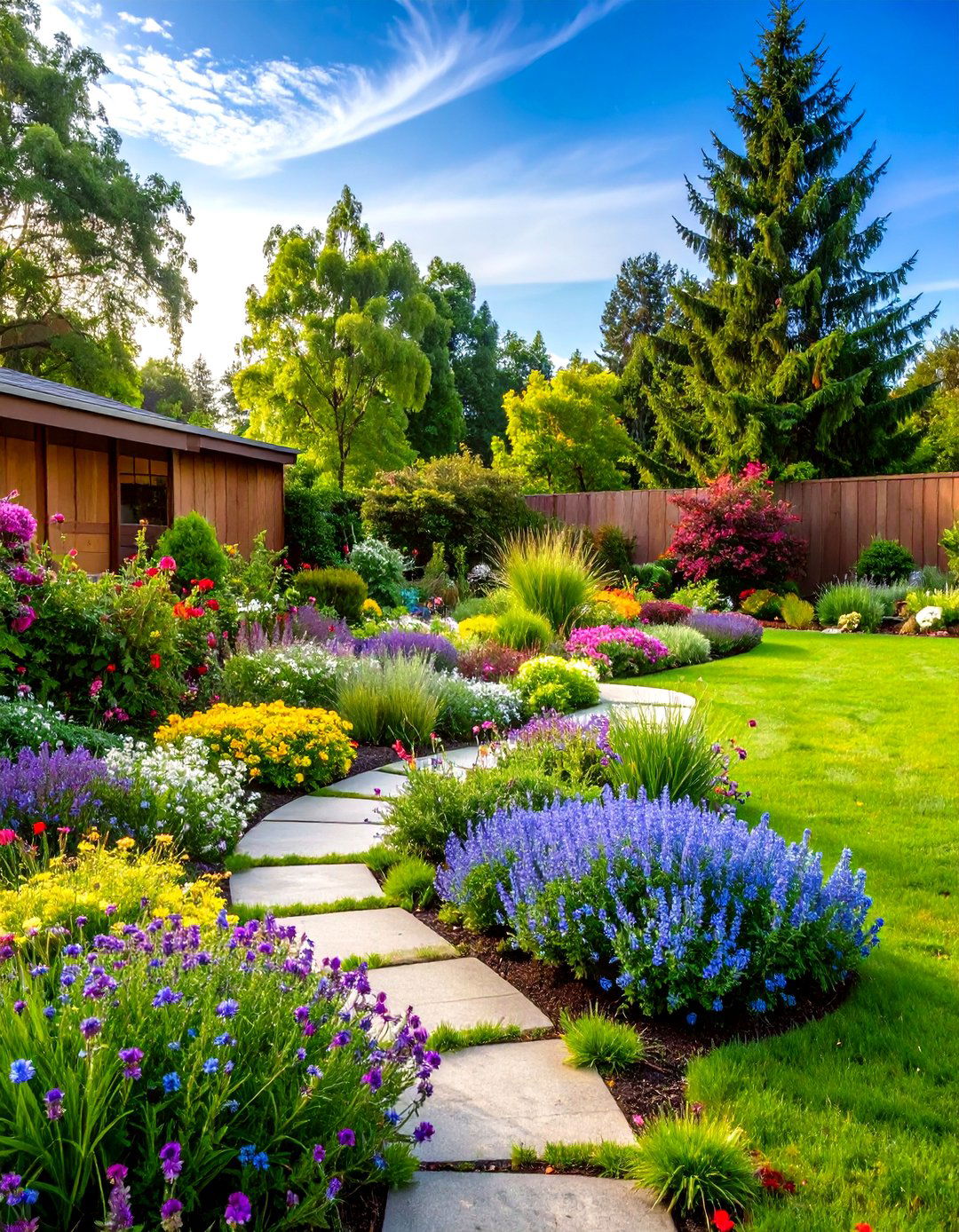
Ground covers are plants that spread across the ground but don't grow tall, eliminating the need for cutting while providing excellent weed suppression. A complete ground cover landscape replaces traditional lawn with spreading perennials that form dense mats of attractive foliage. Options include creeping thyme, blue star creeper, moss, and various sedums that handle foot traffic while providing seasonal flowers. The design should incorporate different ground covers for varying sun and moisture conditions, edging to contain spreading, and strategic placement around trees and shrubs. Many varieties are nitrogen-fixing or provide edible benefits like strawberries or herbs while requiring minimal maintenance once established. This approach creates a tapestry-like landscape that changes with seasons, supports beneficial insects, and eliminates mowing while providing year-round coverage.
13. Mediterranean Style Low Maintenance Backyard Landscaping
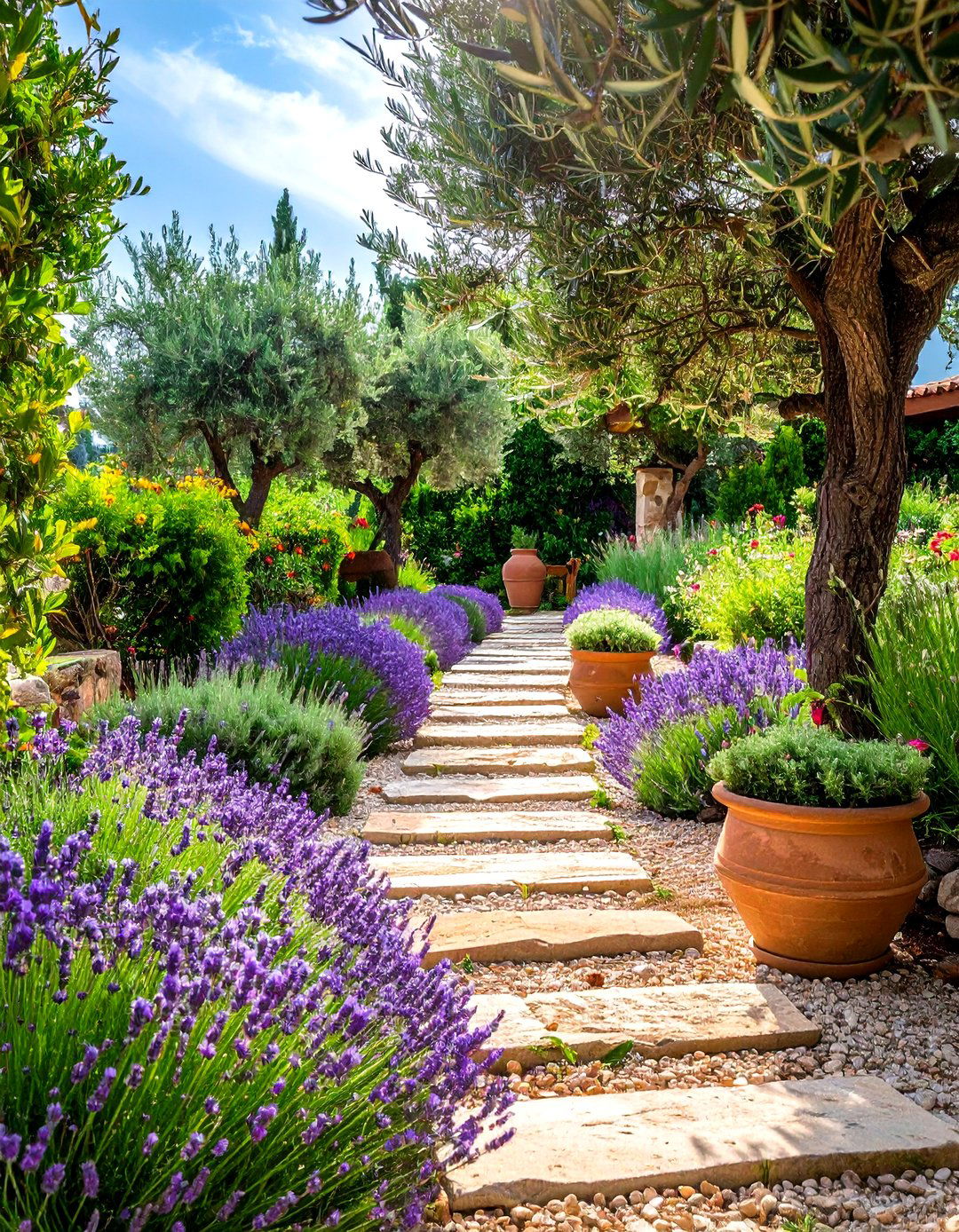
Mediterranean landscapes incorporate drought-resistant plants like lavender, rosemary, and olive trees to create warm, inviting outdoor spaces. This complete design theme combines aromatic herbs, silver-leafed plants, and natural stone elements to evoke coastal European gardens. Plants such as rosemary, lavender, and ornamental grasses are artfully combined with succulents to create visually stunning yet low-maintenance gardens. The landscape should include terra cotta containers, gravel pathways, natural stone walls, and outdoor dining areas that encourage relaxation. Use natural stone pathways and gravel to enhance the garden's rustic, earthy feel while complementing the warm tones of Mediterranean plants. This approach creates a sensory garden experience with fragrant plants, textural contrasts, and colors that evoke warm, sunny climates while requiring minimal water and care.
14. Raised Bed Low Maintenance Backyard Landscaping
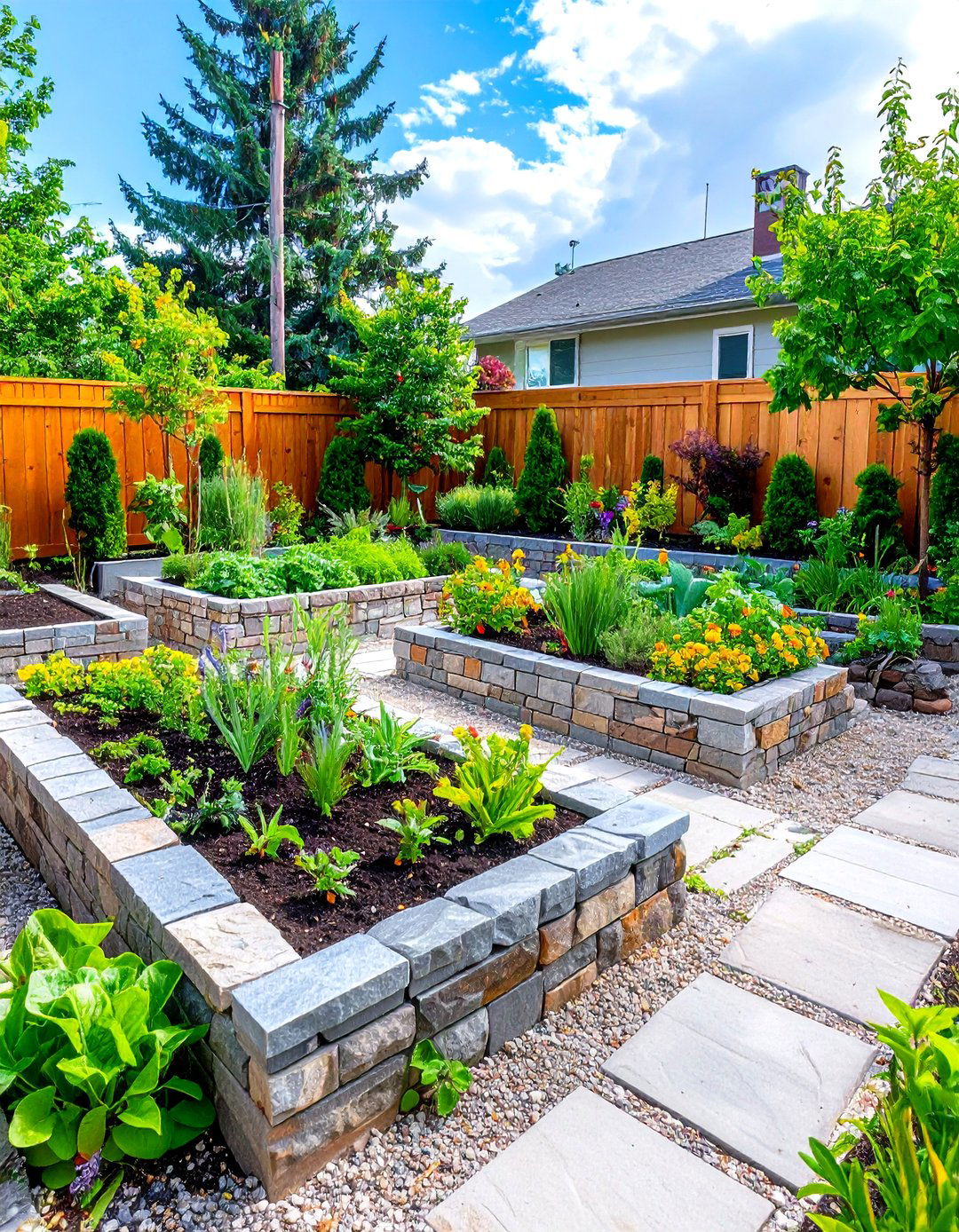
Raised garden beds simplify gardening with less weeding, better drainage, and easier access, making them ideal for low maintenance landscapes. A comprehensive raised bed design creates structured growing areas using durable materials like stone, composite lumber, or metal that define the landscape architecture. Raised beds can be filled with well-draining soil mixes appropriate for specific plant types, with heights designed for comfortable maintenance. The design should incorporate pathways between beds, efficient irrigation systems, and groupings that create visual balance throughout the space. This approach allows for better soil control, easier maintenance access, and the ability to create specific growing conditions for different plant types. The structured appearance works well with both formal and informal landscape styles while significantly reducing bending, weeding, and soil preparation work.
15. Woodland Edge Low Maintenance Backyard Landscaping
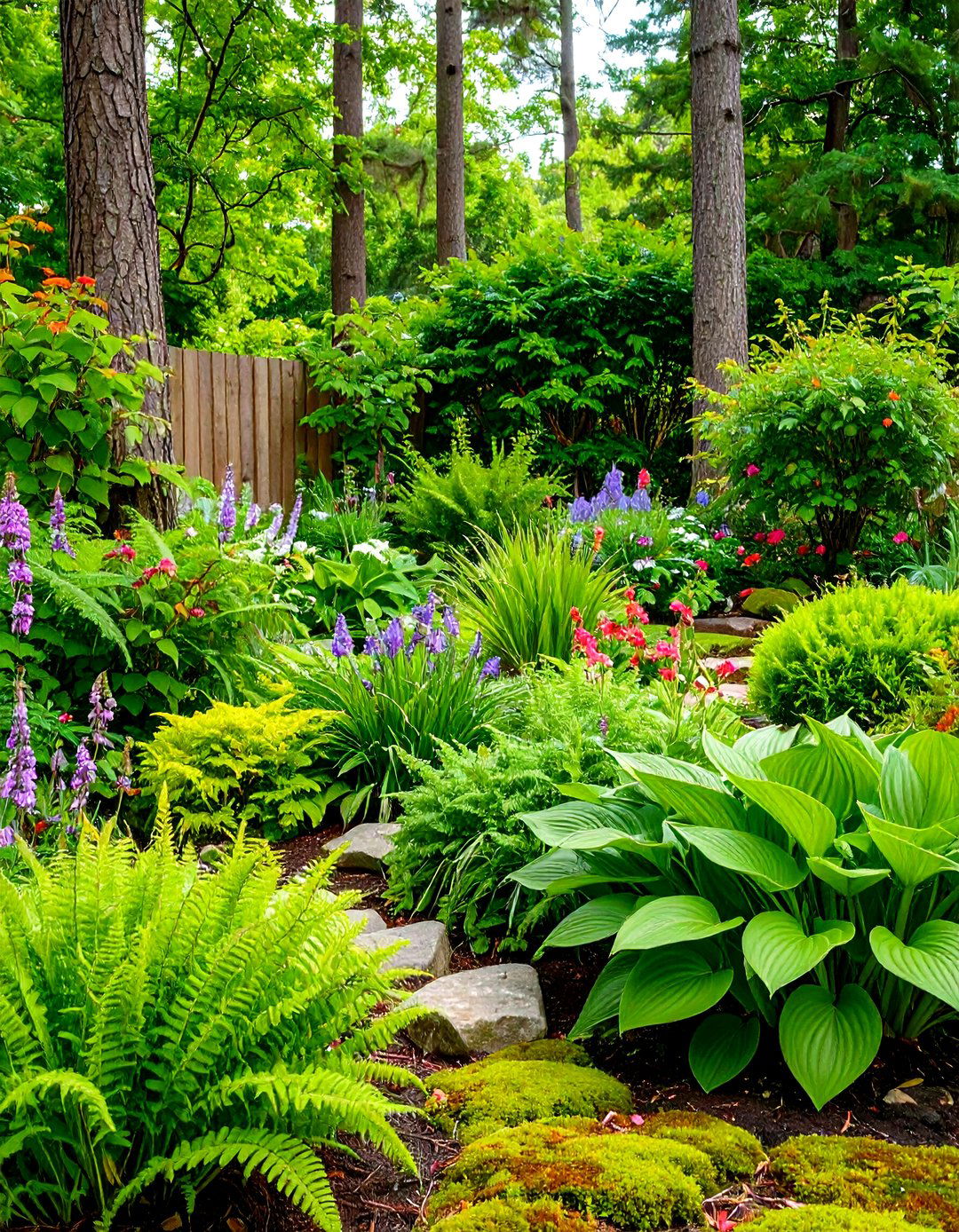
Woodland landscapes use native understory plants, ground covers, and naturalistic plantings that thrive in partial shade conditions. This complete design incorporates existing trees or new tree plantings as canopy elements, with layered plantings of shade-tolerant shrubs, perennials, and ground covers beneath. Plant selections include hardy ferns, hostas, and other shade-loving plants that create graceful style in moist, shady areas where grass won't grow. The design should feature natural-looking pathways, varied textures and leaf sizes, and seasonal interest through flowering plants and colorful foliage. Options like moss lawns can provide green coverage that requires no fertilizing or mowing while creating carpet-like texture. This approach works particularly well in naturally shaded areas, creating a peaceful retreat that supports wildlife and requires minimal intervention once established.
16. Fire-Resistant Low Maintenance Backyard Landscaping
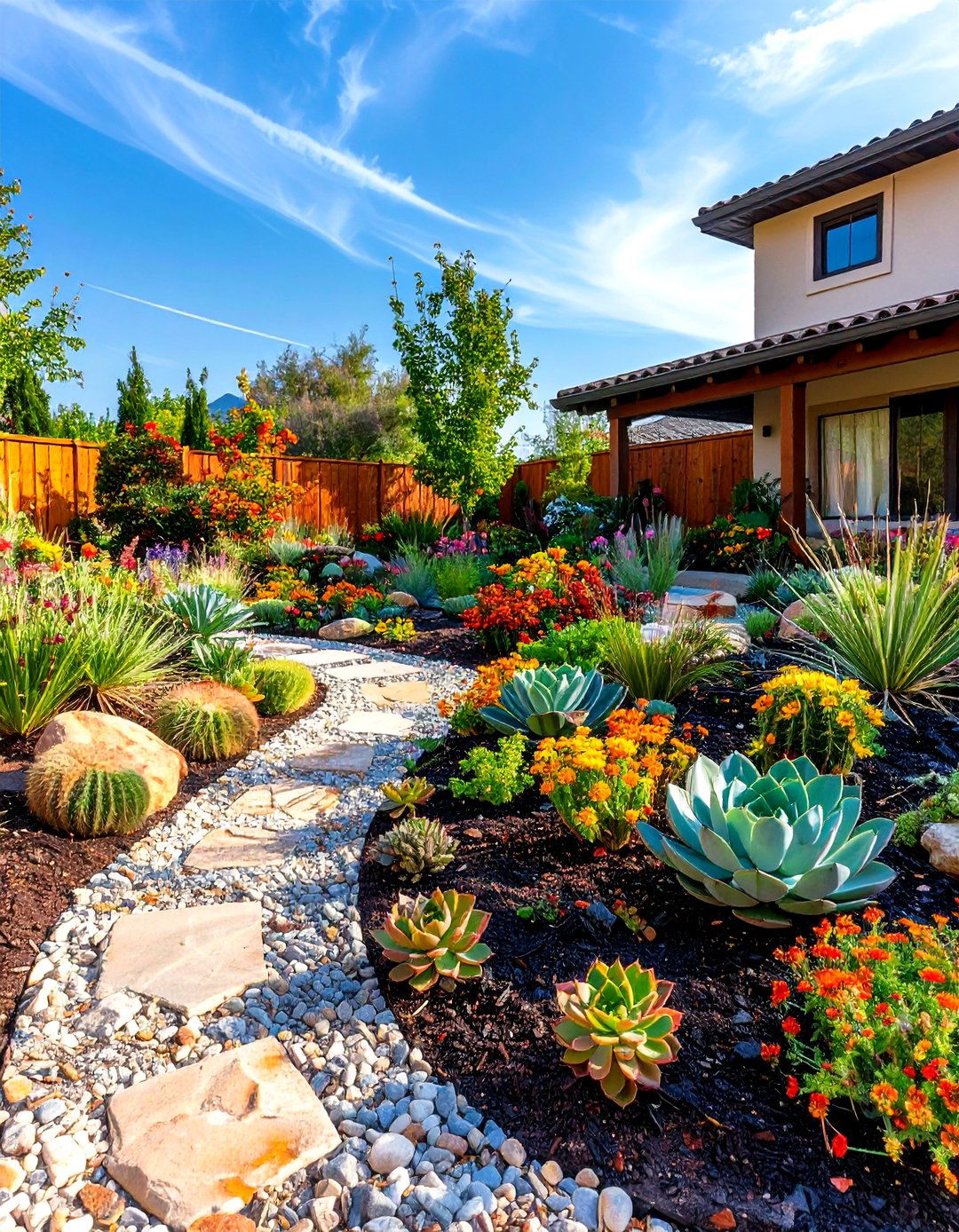
Fire-resistant landscaping uses plants and materials that are less likely to ignite while creating defensible space around homes. This complete safety-focused design incorporates low-flammability plants, strategic spacing, and hardscape elements that interrupt fire pathways. Succulent varieties that retain moisture in their tissues make ideal choices for fire-wise landscaping, combined with gravel areas and stone features. The landscape should include proper plant spacing, removal of dead vegetation, and creation of fuel breaks using patios, driveways, or lawn areas. Design features can include fire pits constructed with fire-resistant materials that serve as gathering spots while maintaining safety principles. This approach prioritizes safety while creating beautiful outdoor spaces using plants like ice plants, aloes, and other succulent varieties that provide attractive ground coverage with high moisture content.
17. Vertical Garden Low Maintenance Backyard Landscaping
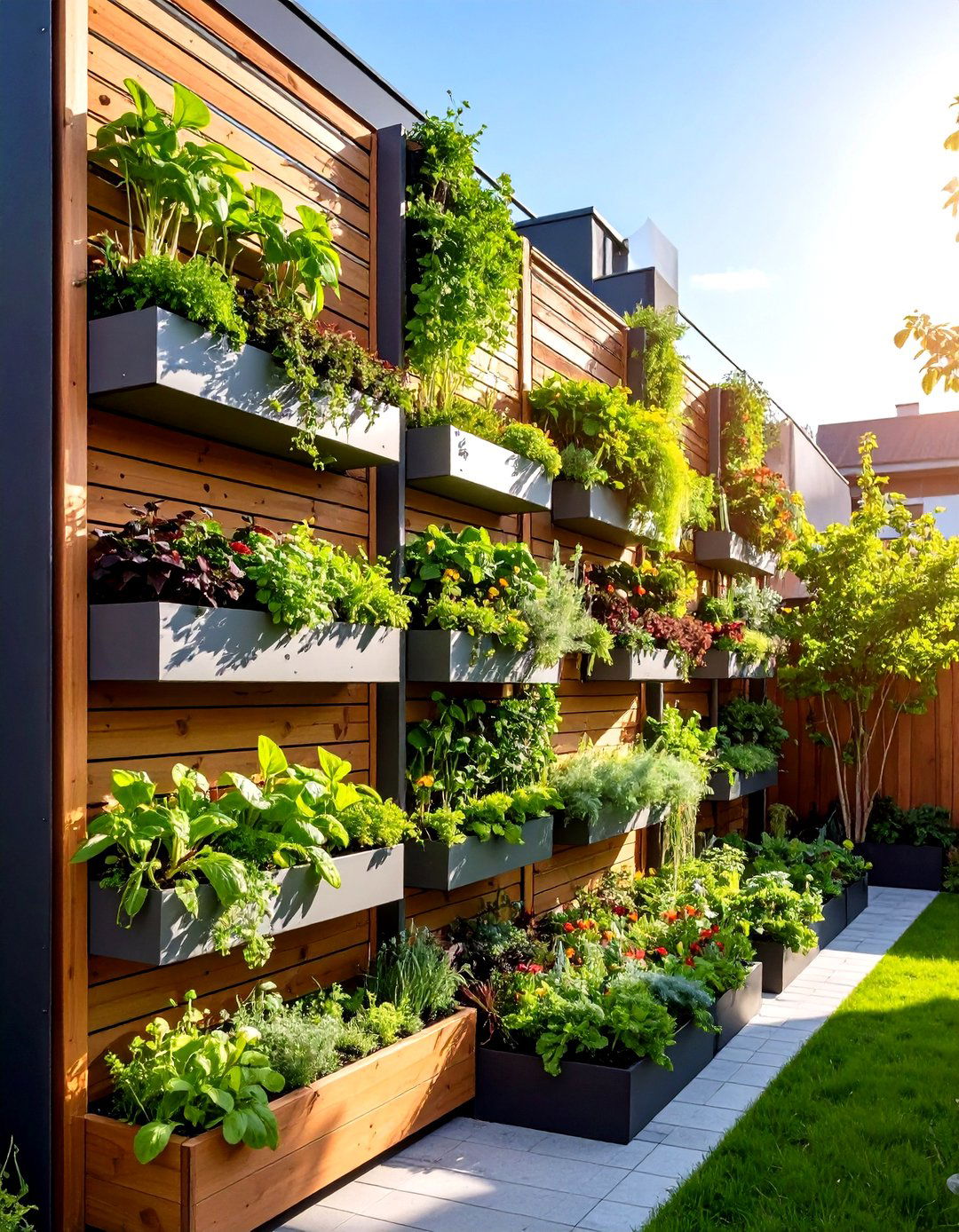
Vertical gardening maximizes space and conserves water by growing plants on walls, trellises, or living wall systems. This complete design approach transforms vertical surfaces into growing areas using modular systems, hanging planters, or trained climbing plants. Install systems with waterproof backing, well-draining growing medium, and drip irrigation for easy maintenance. The design should incorporate different plant types at various levels, creating tapestries of color and texture that change seasonally. Vertical gardens provide insulation, reduce water evaporation from soil, and add visual interest while utilizing previously unused space. This approach works particularly well in small spaces, urban environments, or as screening elements, and can incorporate edible plants, succulents, or flowering vines depending on light conditions and maintenance preferences.
18. Prairie Style Low Maintenance Backyard Landscaping
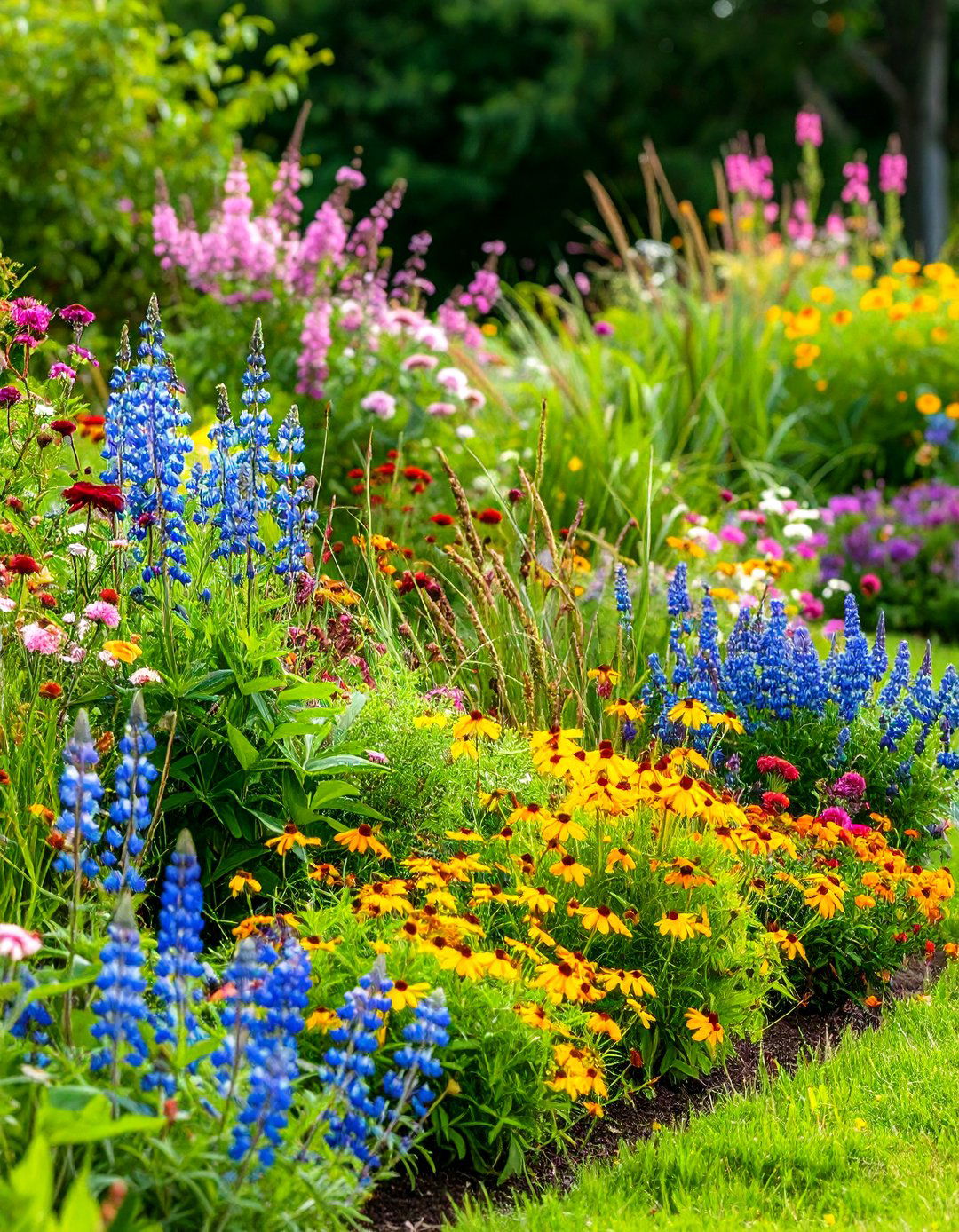
Prairie landscapes dominated by native grasses and flowering plants create naturalistic environments that support local wildlife while requiring minimal input. This complete ecosystem approach uses deep-rooted plants that withstand drought and create habitat for birds, butterflies, and beneficial insects. Common plants include little bluestem, Indian grass, switchgrass, and native wildflowers like salvias and penstemons. The design should feature seasonal succession of blooms, varied heights for visual interest, and pathways that allow access without disturbing wildlife habitat. These landscapes support 90% of butterflies and moths while providing food and shelter for native bees and other pollinators. This approach creates dynamic landscapes that change dramatically with seasons, provide educational opportunities, and require only annual management like controlled burning or selective cutting.
19. Contemporary Minimalist Low Maintenance Backyard Landscaping
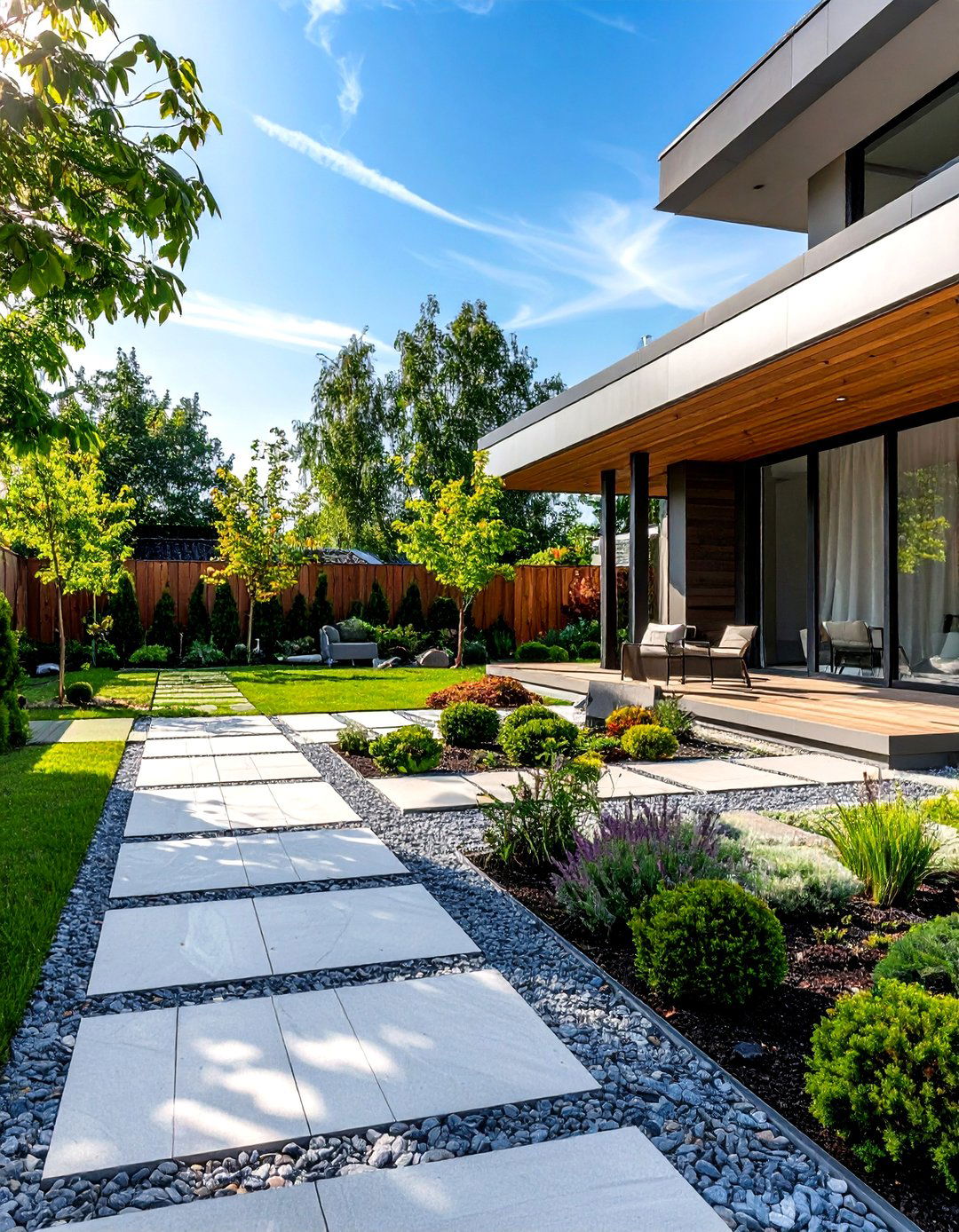
Contemporary design uses clean lines, geometric shapes, and carefully selected materials to create sophisticated outdoor spaces with minimal complexity. This complete design philosophy emphasizes negative space, architectural plants, and high-quality materials that age gracefully. Elements include large format pavers, geometric planting beds, water features with clean lines, and carefully selected specimen plants. The landscape should feature limited plant palettes for cohesive appearance, strategic lighting for evening impact, and integration with home architecture. Design elements like zen-inspired gravel areas, minimalist seating, and sculptural plants create focal points that promote relaxation and mindfulness. This approach requires higher initial investment but provides long-term low maintenance through quality materials and thoughtful plant selection that maintains structure year-round.
20. Edible Landscape Low Maintenance Backyard Landscaping
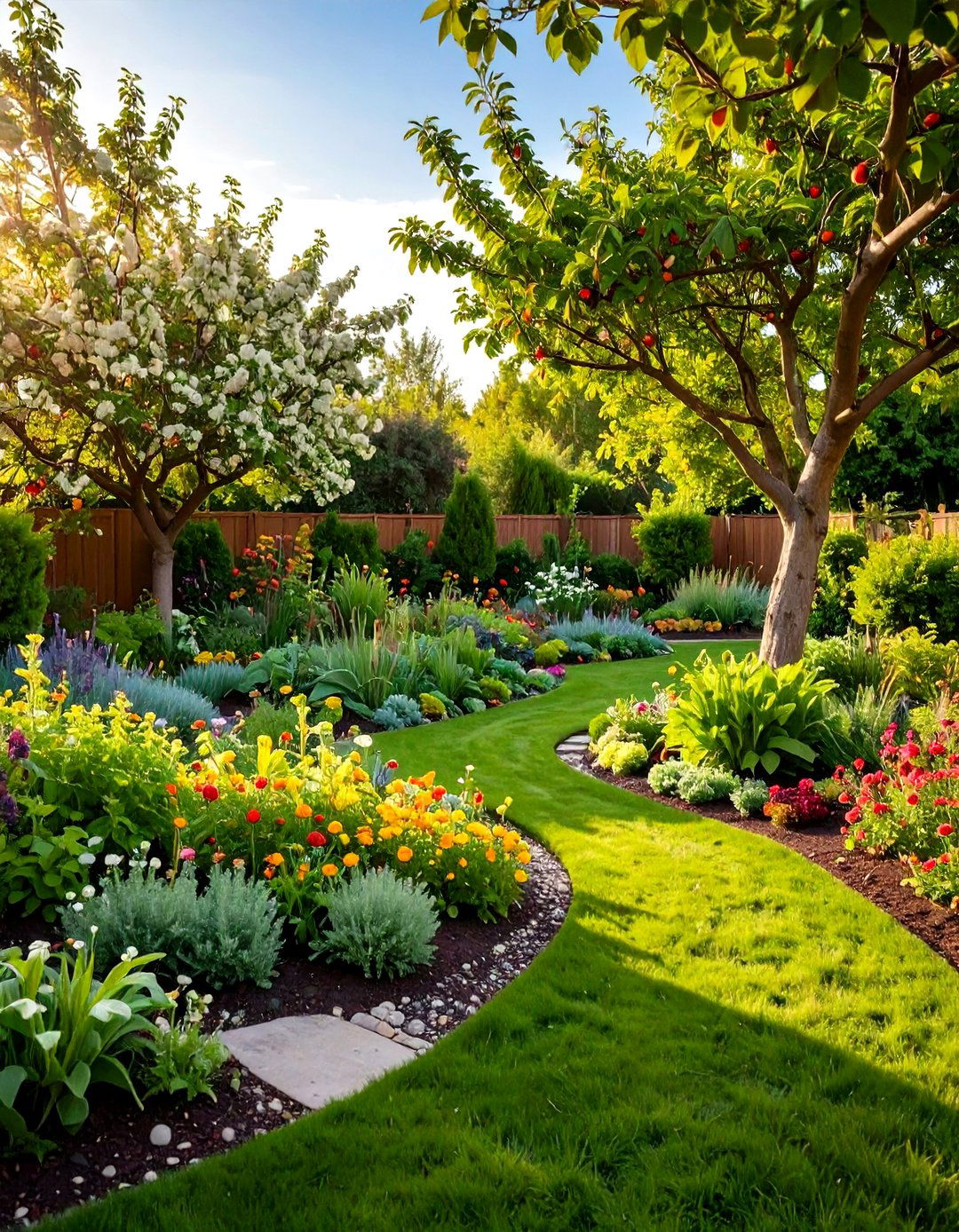
Edible landscapes incorporate fruits, vegetables, and herbs into backyard design to create beautiful and functional outdoor spaces that provide fresh produce. This complete productive landscape approach combines ornamental and edible plants that require similar care while providing harvest opportunities. Companion planting techniques can reduce fertilization and pest control needs by growing pairs or trios of plants that provide beneficial effects to each other. The design should incorporate perennial fruit trees, berry bushes, herb gardens, and annual vegetable areas that blend seamlessly with ornamental elements. This approach reduces carbon footprint by growing food at home while requiring less maintenance than traditional gardens. Strategic plant selection focuses on low-maintenance edibles like herbs, berry bushes, and fruit trees that provide multiple seasons of interest while reducing grocery bills and connecting families with food production.
Conclusion:
Creating a beautiful backyard doesn't require hours of weekly upkeep when you embrace low-maintenance landscaping techniques. These twenty comprehensive design approaches demonstrate that you can achieve stunning outdoor spaces while dramatically reducing maintenance time, water usage, and ongoing costs. Whether you choose native plants, hardscaping, alternative ground covers, or specialized themes like desert or prairie landscapes, the key lies in selecting appropriate plants and materials for your specific climate and lifestyle needs. By incorporating these strategies, you can transform your outdoor space into a beautiful retreat that requires minimal effort while providing maximum enjoyment for years to come.


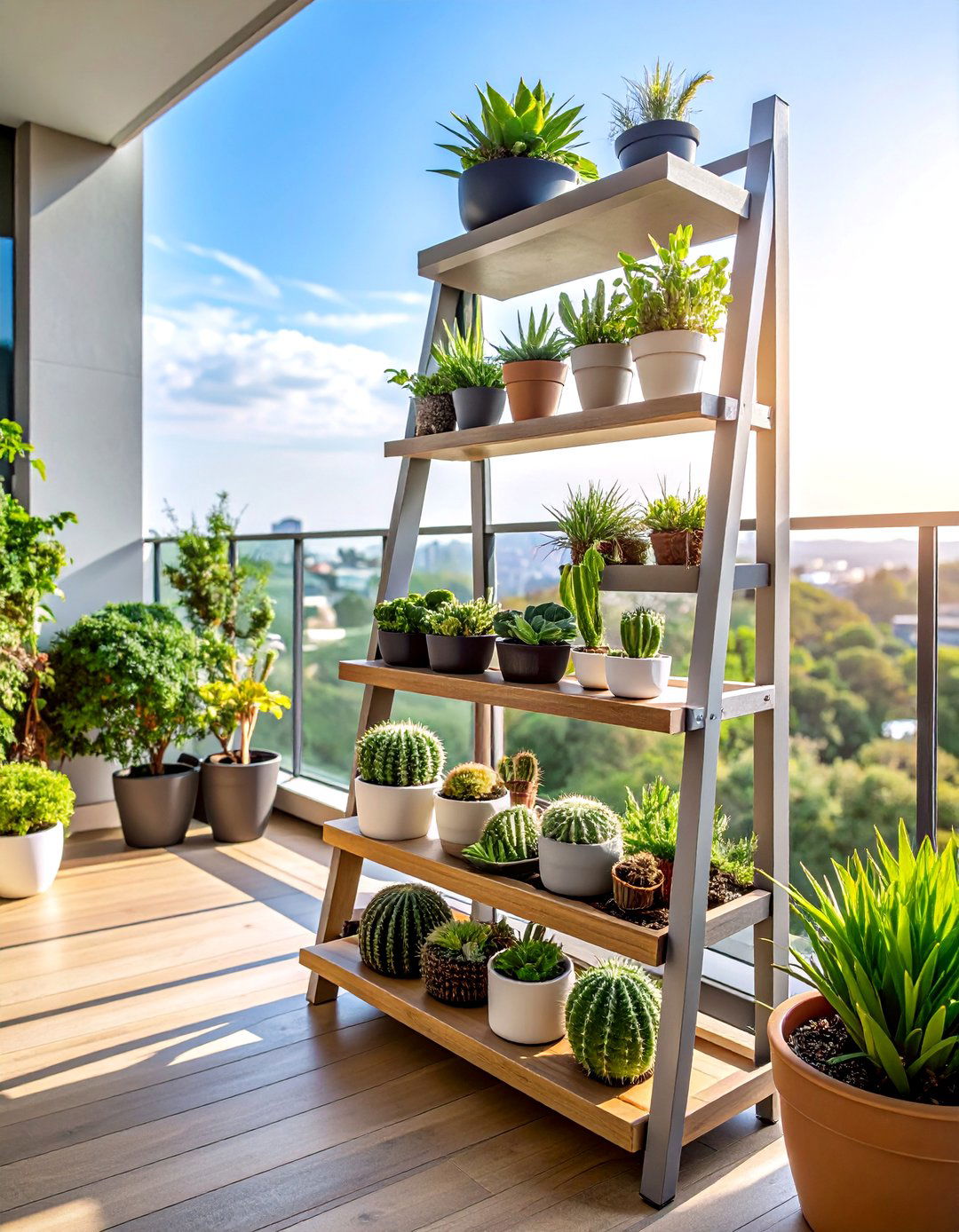


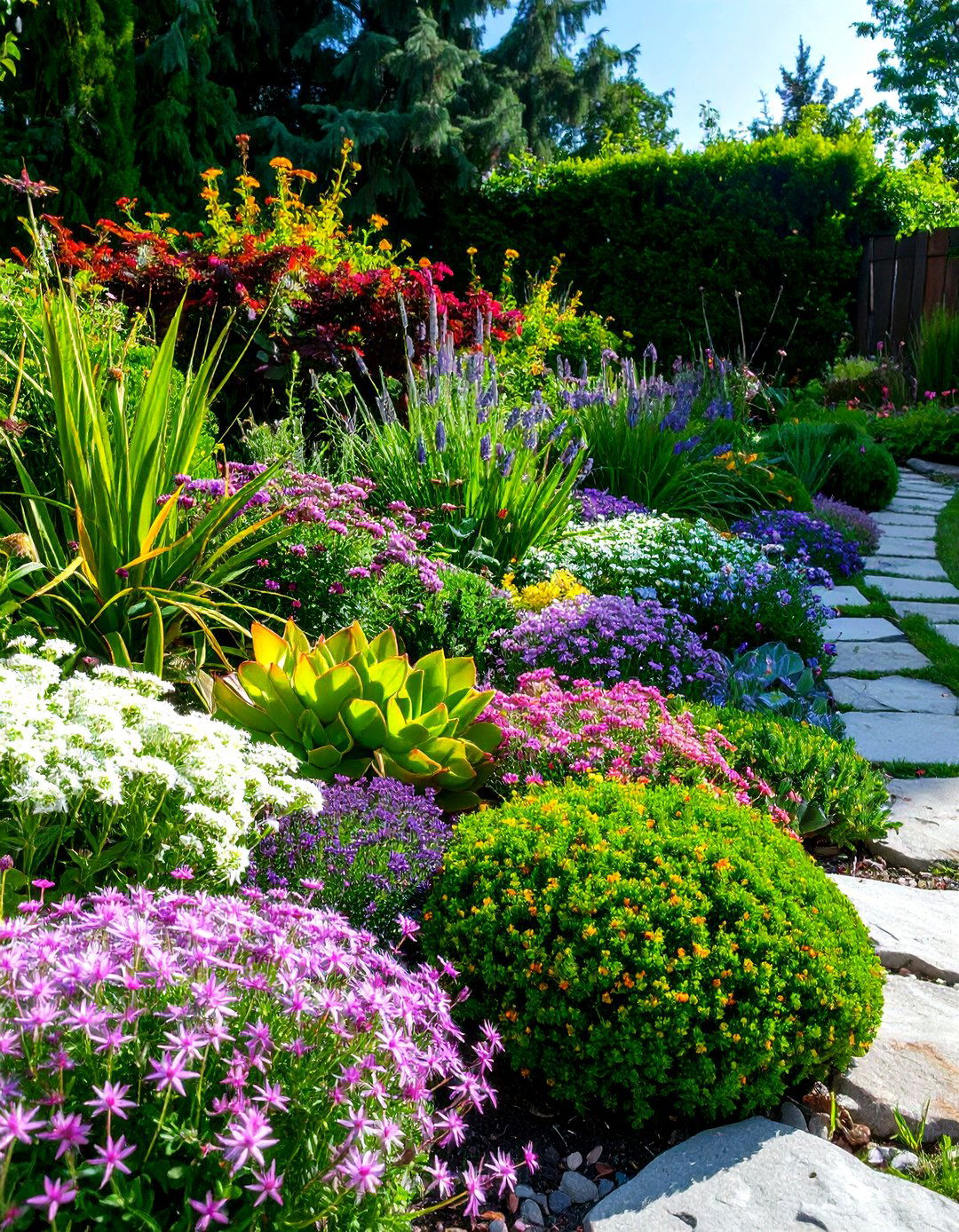
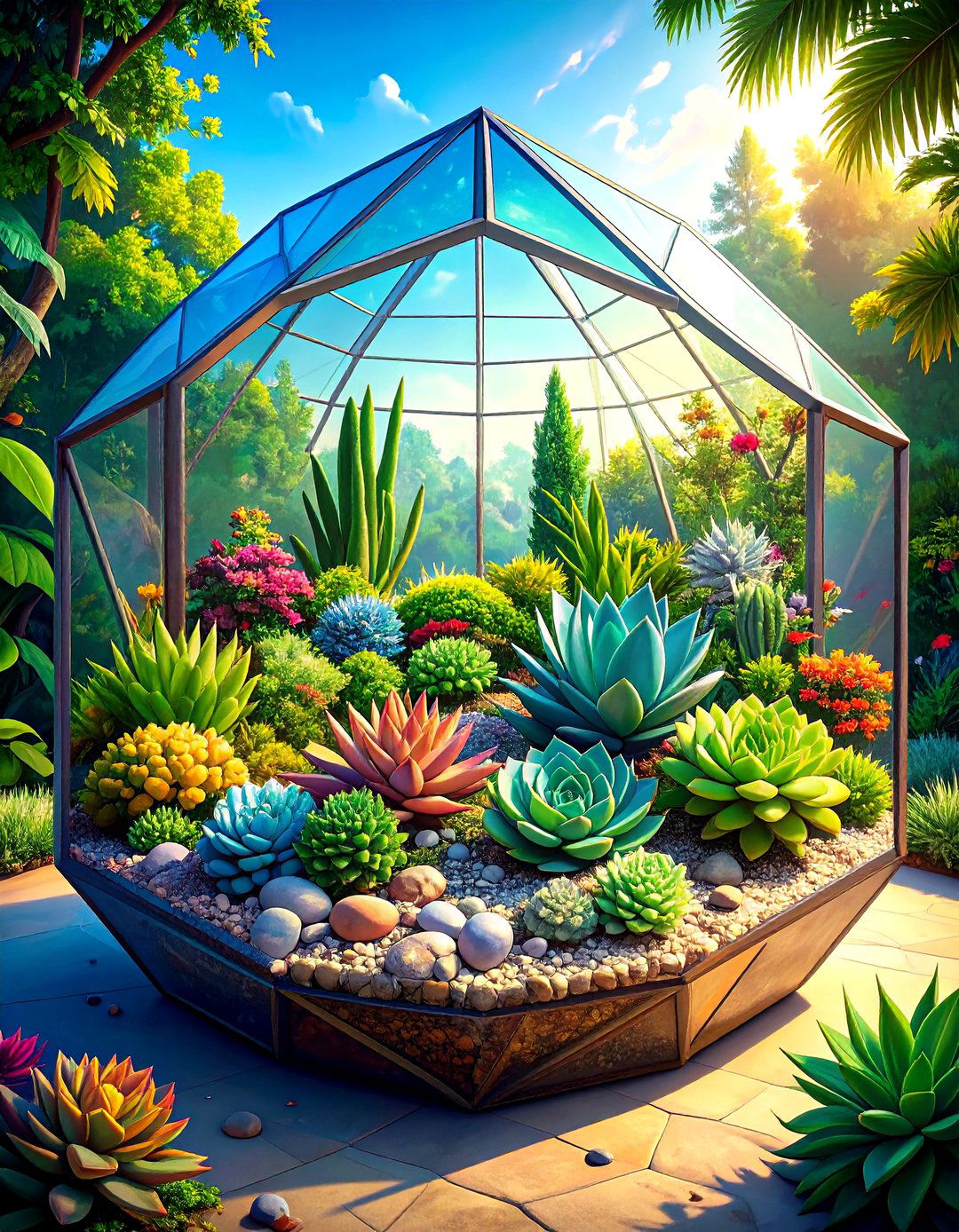
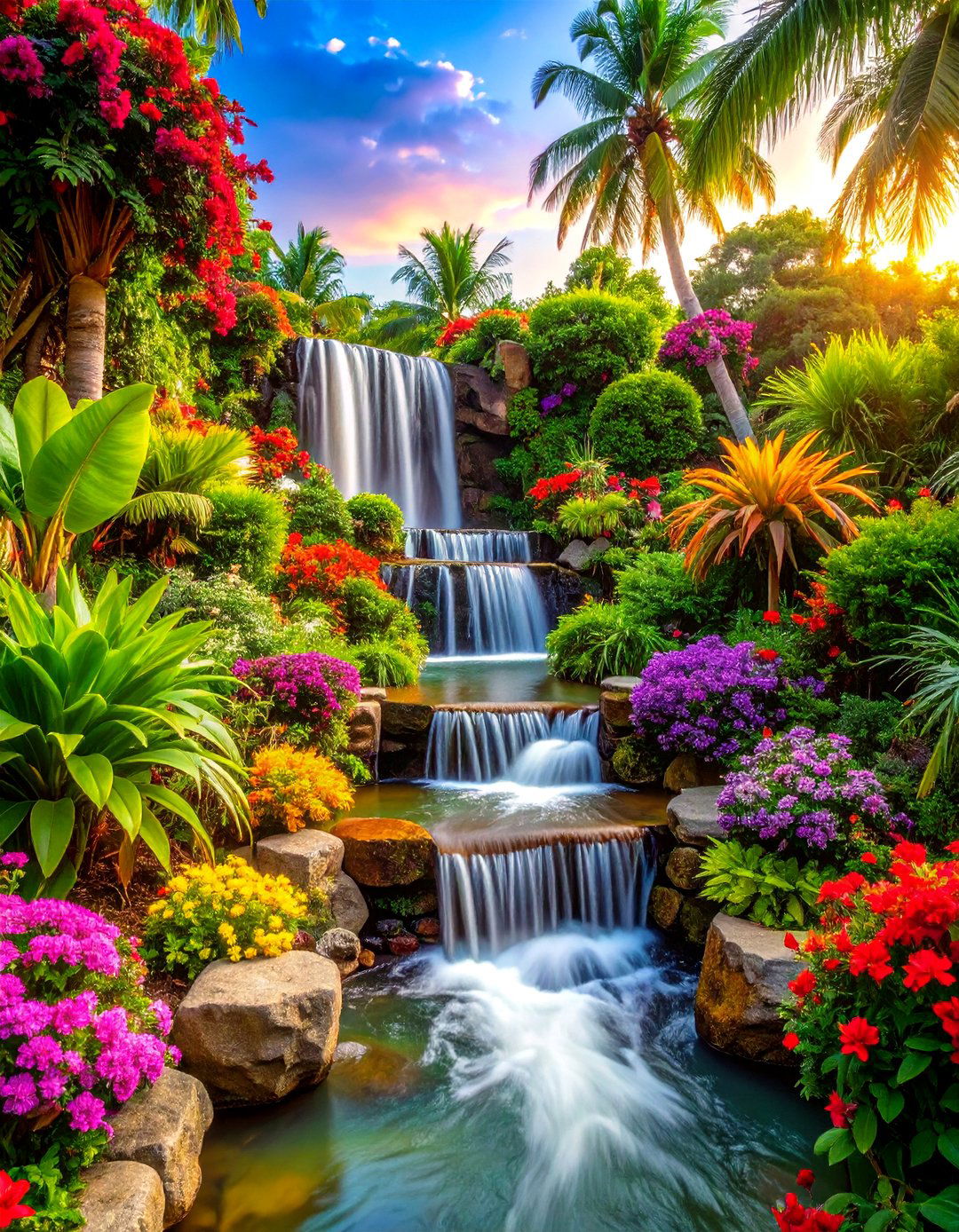

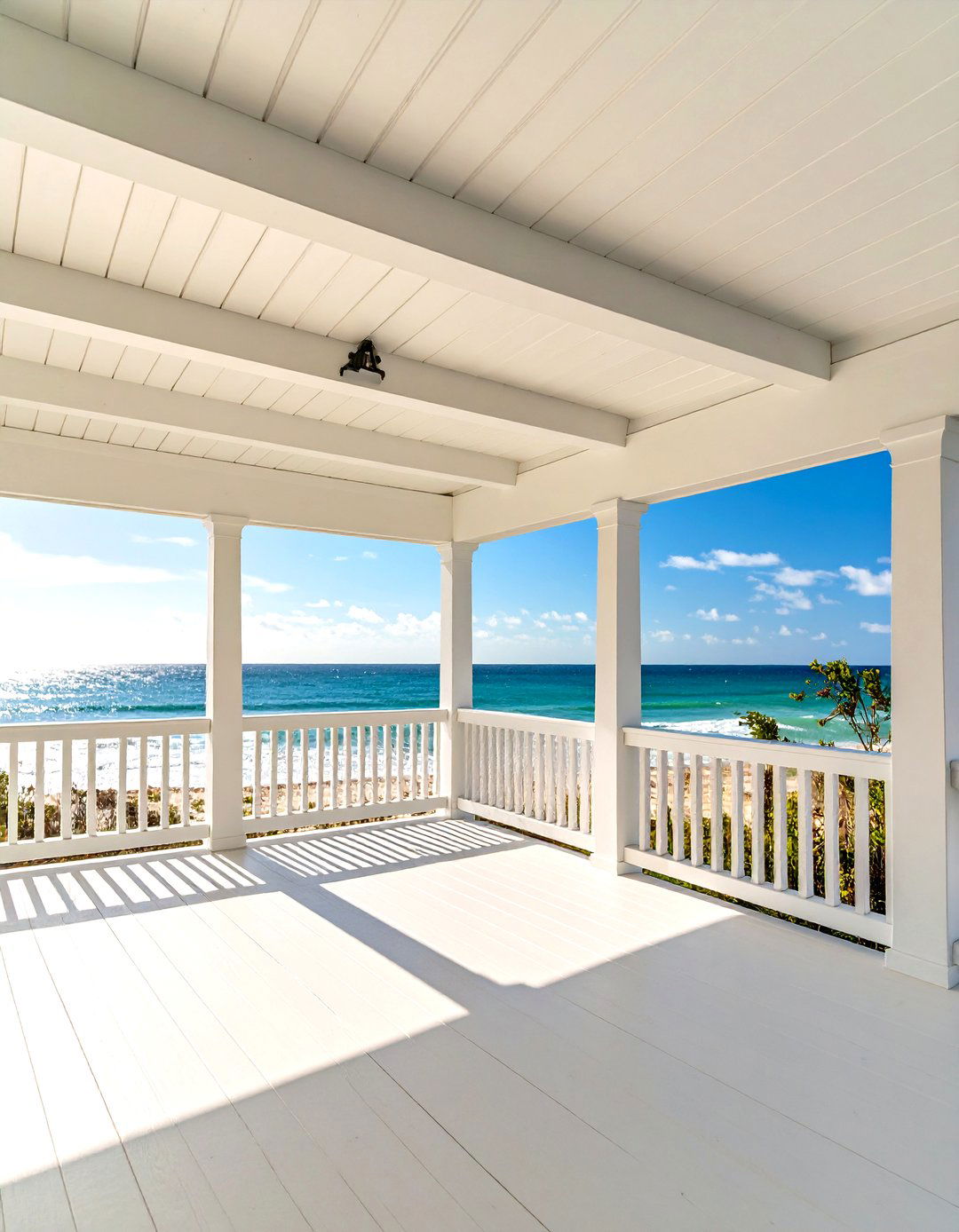
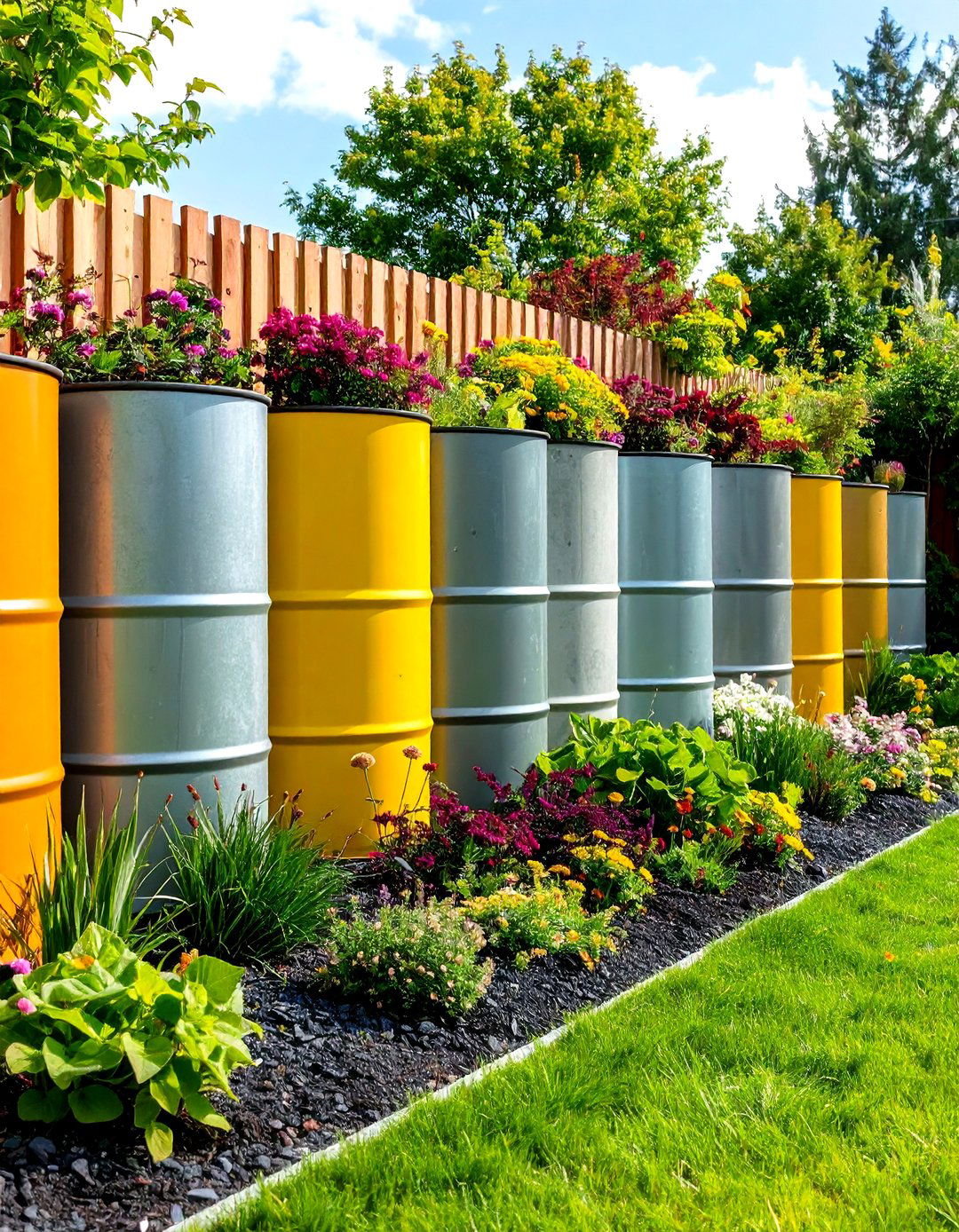
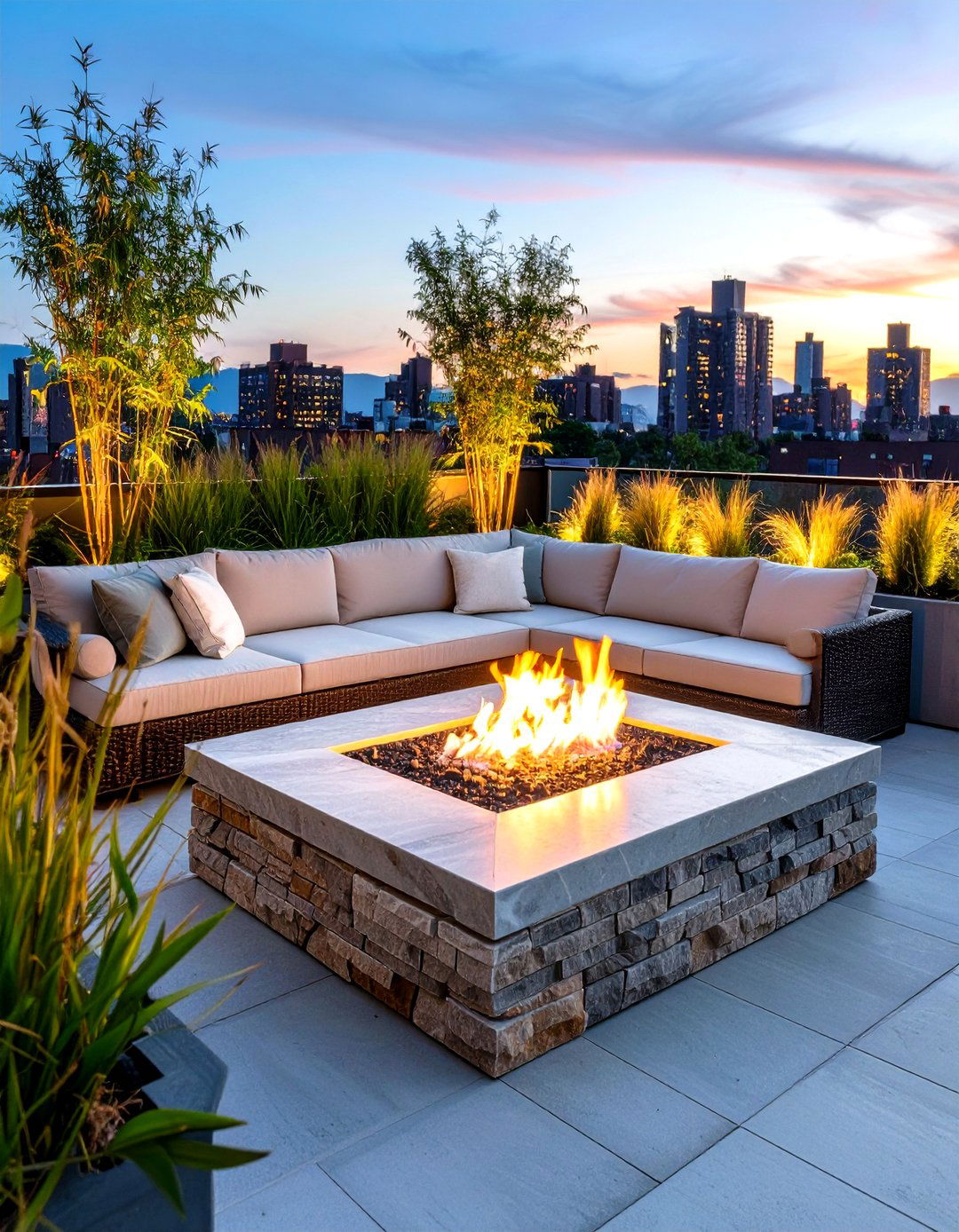
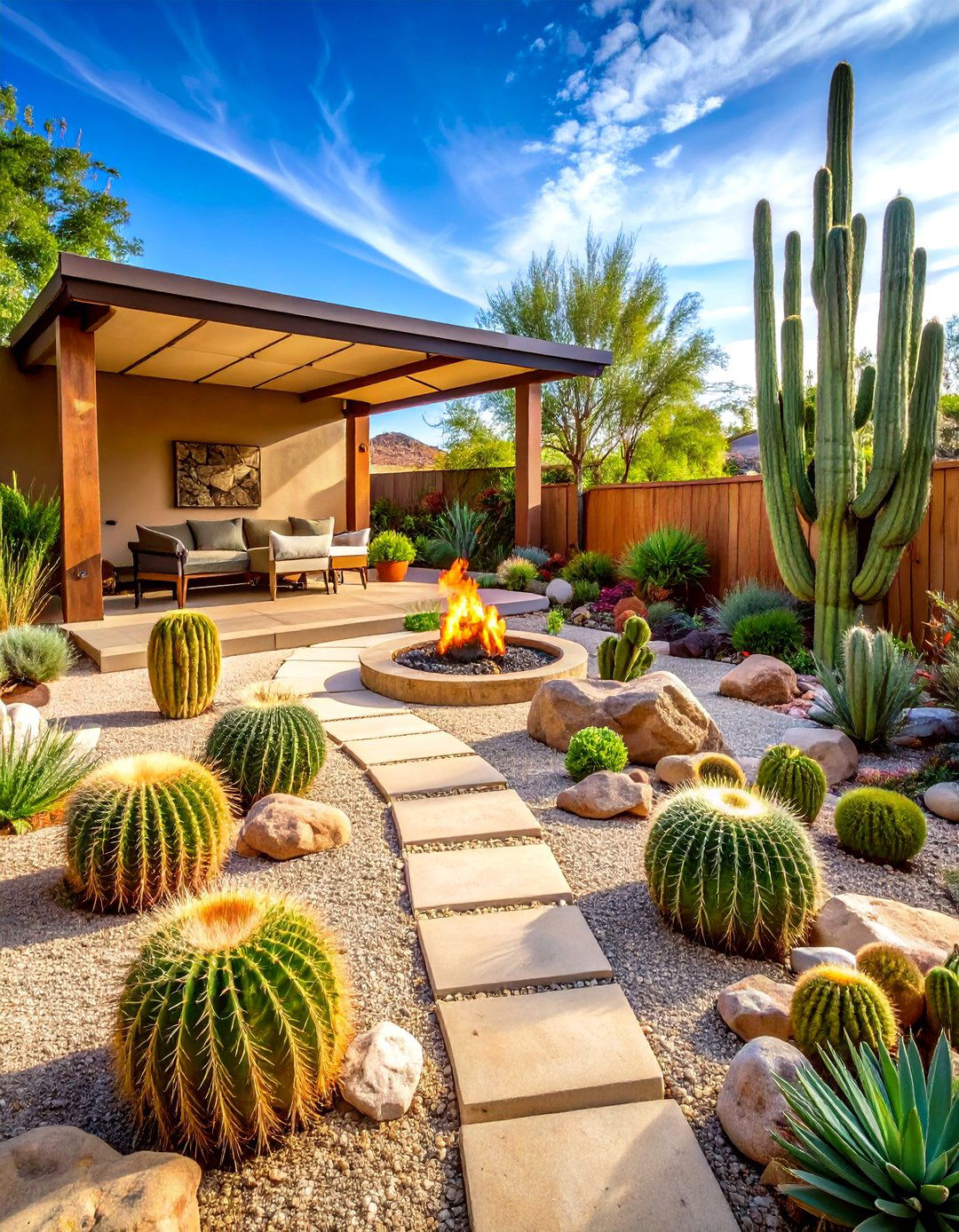
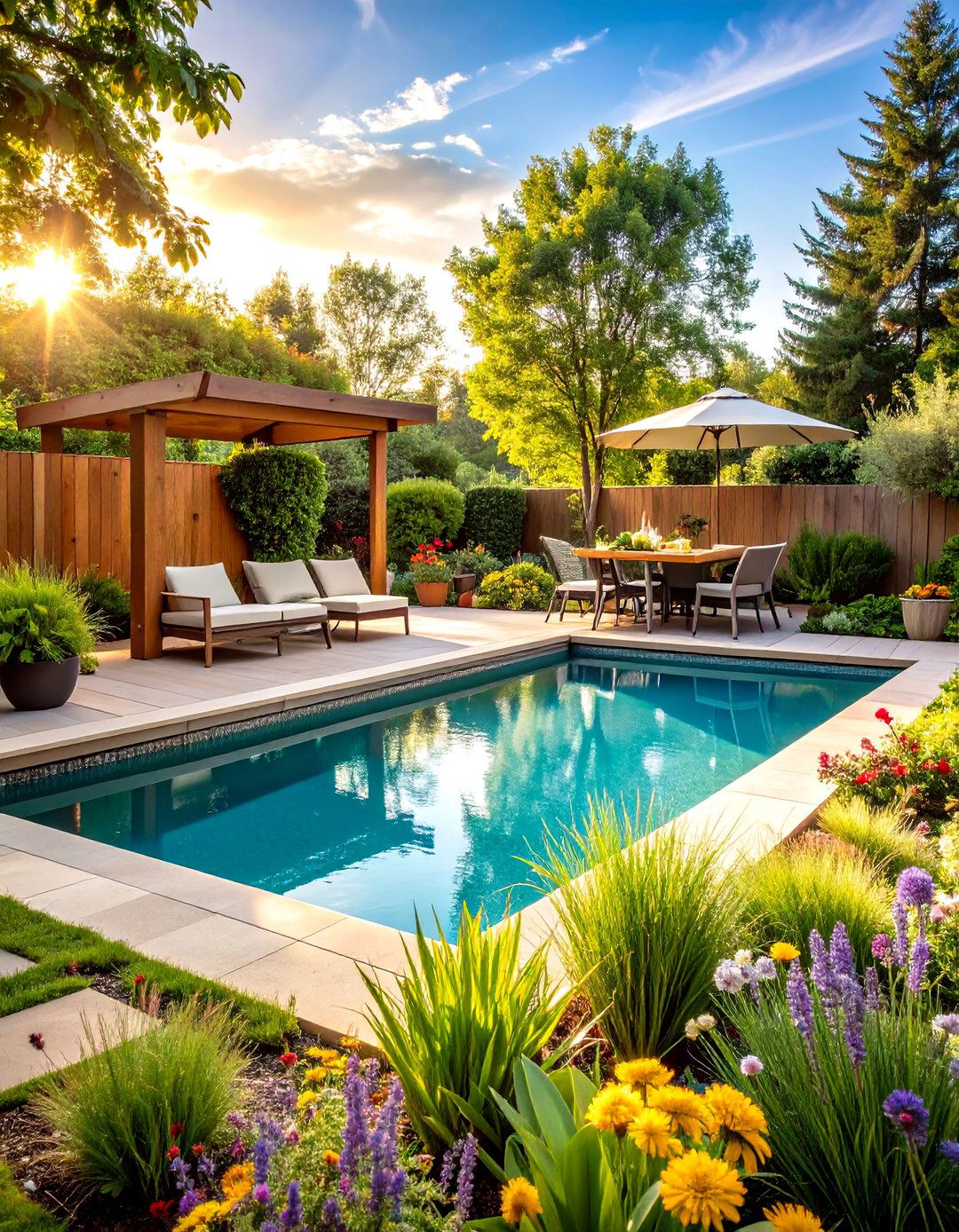
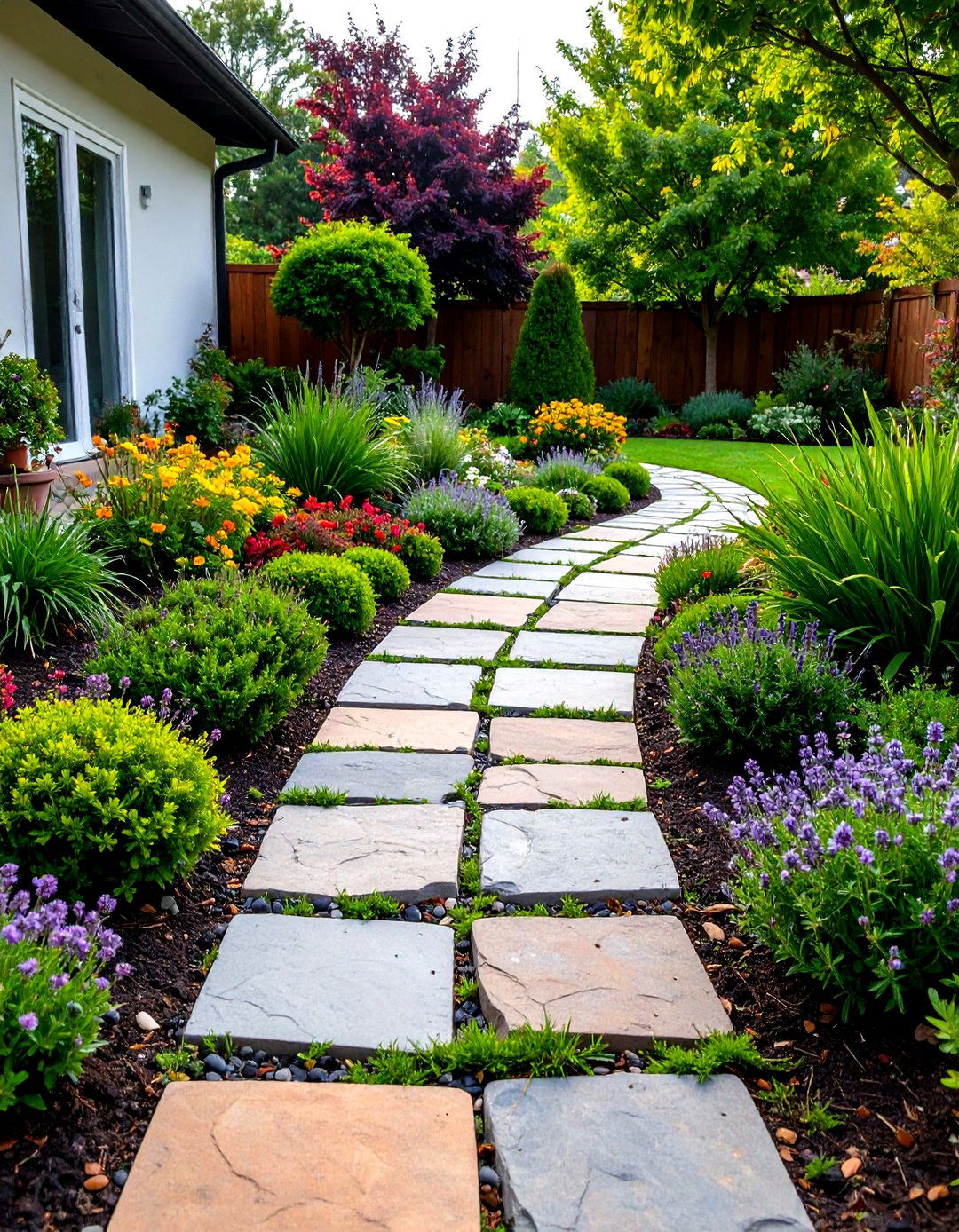

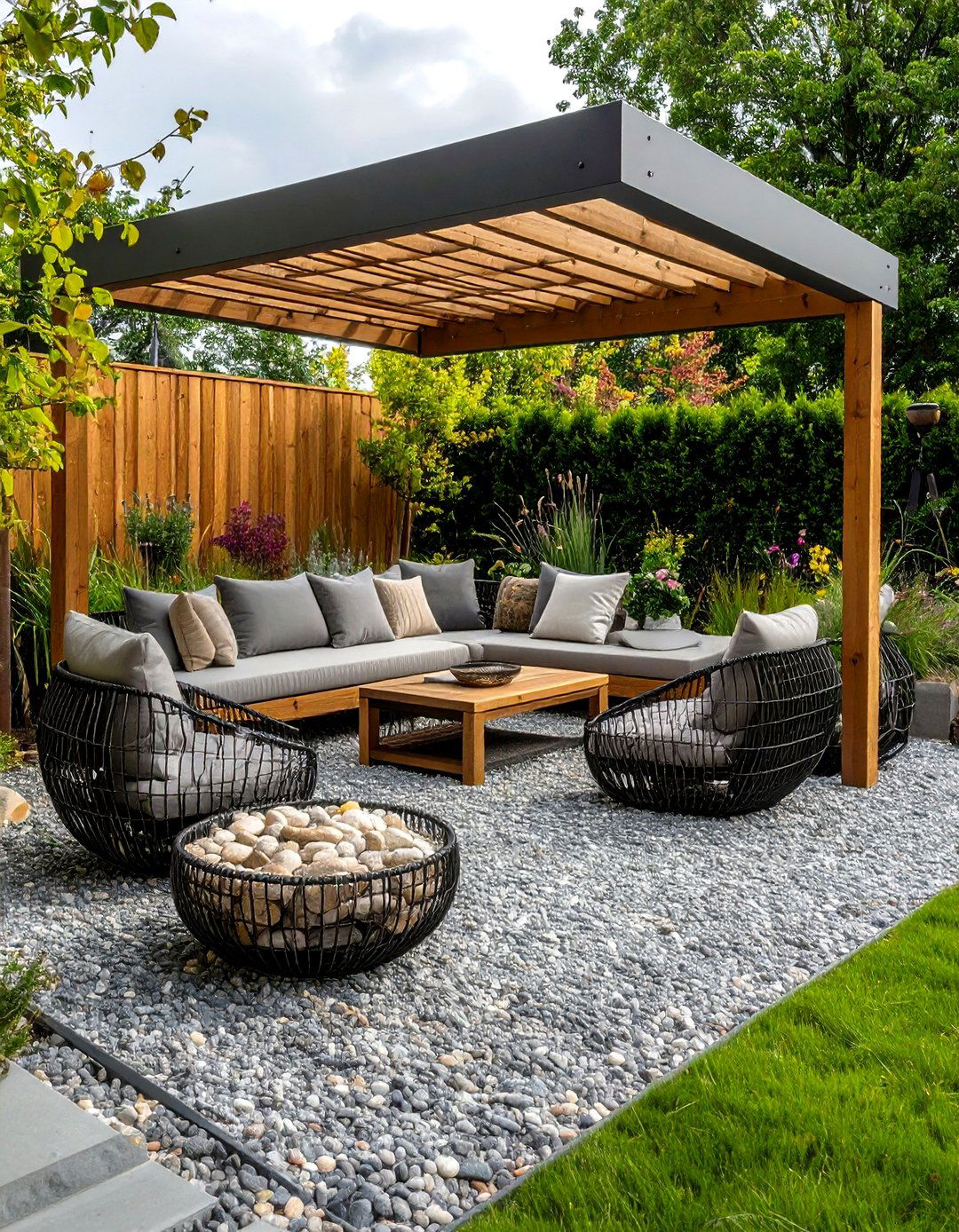
Leave a Reply